These powerful historical photos have the power to capture a moment in time and to evoke a range of emotions that transcend time and geography. They document moments of triumph and tragedy, hope and despair, bravery and oppression. From the horrors of war to the triumphs of exploration, these powerful historical photos remind us of our shared humanity and the importance of bearing witness to history.
In this article, we’ll explore some of the most powerful historical photos of all time. These images have become symbols of human experience, capturing moments that have defined our world and the people who inhabit it. From the civil rights movement to the horrors of the Holocaust, these photos tell stories that are as important today as they were when they were first taken. They have also captured moments of scientific achievement and exploration, reminding us of the boundless potential of human ingenuity and the importance of pushing the boundaries of what is possible. These images serve as a testament to the power of collaboration and determination and highlight the remarkable achievements of the human race. They remind us of our shared experiences and emotions and inspire us to continue striving for progress and positive change. They captured the essence of a moment and serve as a powerful reminder of our humanity, highlighting the need for compassion, empathy, and action in the face of injustice.
Also check, our previous lists of the most famous, iconic and some important historical photos that shaped the world.
#1 The Terror of War, 1972

As the Vietnamese photographer took pictures of the carnage, he saw a group of children and soldiers along with a screaming naked girl running up the highway toward him. Ut wondered, Why doesn’t she have clothes? He then realized that she had been hit by napalm.
“I took a lot of water and poured it on her body. She was screaming, ‘Too hot! Too hot!’” Ut took Kim Phuc to a hospital, where he learned that she might not survive the third-degree burns covering 30 percent of her body. So with the help of colleagues, he got her transferred to an American facility for treatment that saved her life.
Ut’s photo of the raw impact of conflict underscored that the war was doing more harm than good. It also sparked newsroom debates about running a photo with nudity, pushing many publications, including the New York Times, to override their policies. The photo quickly became a cultural shorthand for the atrocities of the Vietnam War and joined Malcolm Browne’s Burning Monk and Eddie Adams’ Saigon Execution as defining images of that brutal conflict. When President Richard Nixon wondered if the photo was fake, Ut commented, “The horror of the Vietnam War recorded by me did not have to be fixed.” In 1973 the Pulitzer committee agreed and awarded him its prize. That same year, America’s involvement in the war ended
#2 The Burning Monk, 1963

On June 11, 1963, Associated Press photographer Malcolm Browne captured a stunning and gruesome image that would become an iconic symbol of the Vietnam War. The photograph shows a Buddhist monk, Thich Quang Duc, immolating himself on a Saigon street to protest the persecution of Buddhists by the South Vietnamese government. Thich Quang Duc was a respected religious leader and a prominent figure in the Buddhist community. He and other monks had been protesting against the government's policy of favoring Catholics over Buddhists, and the government had responded with violent crackdowns and arrests.
In a desperate and dramatic act of protest, Thich Quang Duc doused himself with gasoline and set himself on fire. As he burned alive, he remained still and silent, displaying a remarkable sense of peace and composure. It quickly spread around the world and became an enduring symbol of the Vietnam War and the anti-war movement. It shocked and horrified people with its graphic depiction of self-immolation, and it sparked widespread outrage at the treatment of Buddhists in South Vietnam.
#3 Starving Child and Vulture, 1993

In 1993, photojournalist Kevin Carter traveled to Sudan to document the devastating effects of the famine that was ravaging the country. In the village of Ayod, he came across a heart-wrenching scene that would become one of the most iconic images of the 20th century. Carter saw an emaciated toddler lying on the ground, too weak to continue on the way to a feeding center. As he took the child's picture, a vulture landed nearby, drawn by the scent of death. Carter reportedly waited for 20 minutes, hoping the bird would spread its wings for a better shot. He did not touch the child as he had been advised not to do so for fear of spreading disease. After scaring the vulture away, Carter watched as the child crawled towards the feeding center. He later lit a cigarette, talked to God, and wept.
The photograph of the starving child and vulture was published in The New York Times, where it immediately gained widespread attention and criticism. Many readers were horrified by the image and demanded to know what happened to the child. Some criticized Carter for not intervening to help the child. Carter won a Pulitzer Prize for the photograph, but he struggled with the aftermath of the image and the criticism that he had received. In July 1994, he took his own life, leaving behind a note that expressed his pain and haunted memories of the suffering he had witnessed.
#4 Lunch Atop a Skyscraper, 1932

Lunch Atop a Skyscraper is one of the most iconic images of the 20th century. Taken in 1932 on the 69th floor of the flagship RCA Building (now the GE Building) at Rockefeller Center, the photograph shows 11 construction workers taking a break and having lunch on a narrow steel beam, 840 feet above the ground. They are seen chatting, smoking and enjoying their lunch as if they are sitting in a park, completely oblivious to the danger and height that surrounds them. It was staged as part of a promotional campaign for the Rockefeller Center construction project, and it has since become a symbol of American resilience and ambition during the Great Depression. The image represents the idea that New York is a city unafraid to tackle large projects that would intimidate other cities.
The photographer who took the photograph remains a mystery, but it is believed to have been one of three photographers present that day - Charles C. Ebbets, Thomas Kelley, or William Leftwich. Despite its staged nature, the image has come to symbolize the bravery and tenacity of construction workers and ironworkers in particular.
#5 Tank Man, 1989

On June 5, 1989, photographer Jeff Widener was on a balcony of the Beijing Hotel in China, documenting the aftermath of the Tiananmen Square massacre. As he captured images of the devastation, he noticed a column of tanks rolling out of the plaza. He quickly lined up his lens just as a man carrying shopping bags stepped in front of the tanks, waving his arms and refusing to move.
The tanks attempted to go around the man, but he kept stepping back into their path and even climbed atop one briefly. Widener expected the man to be killed, but the tanks held their fire. The man was eventually whisked away, but not before Widener had captured the moment of his singular act of resistance against the government's brutality.
Widener's photograph of Tank Man was transmitted over the Associated Press wire and appeared on front pages all over the world. The image has since become an enduring symbol of the power of peaceful protest and the courage of individuals standing up against unjust regimes. Despite his bravery, the identity of Tank Man remains a mystery, which only adds to the universal significance of the photograph. It continues to inspire those who fight for freedom and democracy everywhere.
#6 Falling Man, 2001

Falling Man is a photograph taken by Richard Drew in the moments following the September 11, 2001 attacks on the World Trade Center in New York City. The photograph shows a man falling from one of the Twin Towers, his body perfectly bisecting the iconic towers as he plummets toward the ground. The identity of the man in the photograph is unknown, but he is believed to have been an employee of the Windows on the World restaurant, which was located atop the North Tower. Falling Man is one of the few widely seen images from 9/11 that depicts a person, and it has become a powerful symbol of individuality in the face of mass tragedy.
The photograph was initially published in newspapers across the United States in the days after the attacks, but it faced backlash from readers who found it difficult to process and disturbing to see someone dying. As a result, the image was temporarily removed from circulation.
#7 Alan Kurdi, 2015

Alan Kurdi was a 3-year-old Syrian boy who drowned in the Mediterranean Sea in 2015 while trying to reach the Greek island of Kos with his family. His body was discovered on a Turkish beach by photojournalist Nilufer Demir of the Dogan News Agency. The photograph she took of his lifeless body, lying face down on the shore, became a defining image of the Syrian refugee crisis.
The photograph of Alan Kurdi served as a wake-up call to the world about the ongoing war in Syria and the plight of its refugees. The image was widely shared on social media, accumulating power and compelling news organizations to publish it or explain why they chose not to. European governments were also compelled to open their borders to refugees, and within a week of the photograph's publication, trainloads of Syrians were arriving in Germany to cheers.
The image of Alan Kurdi, dressed for travel and lying between one world and another, became a symbol of the desperation and aspirations of millions of refugees fleeing conflict and seeking a better life. The photograph reminded the world that the refugee crisis was not just a distant problem but a global one that demanded immediate attention and action.
#8 Earthrise, 1968
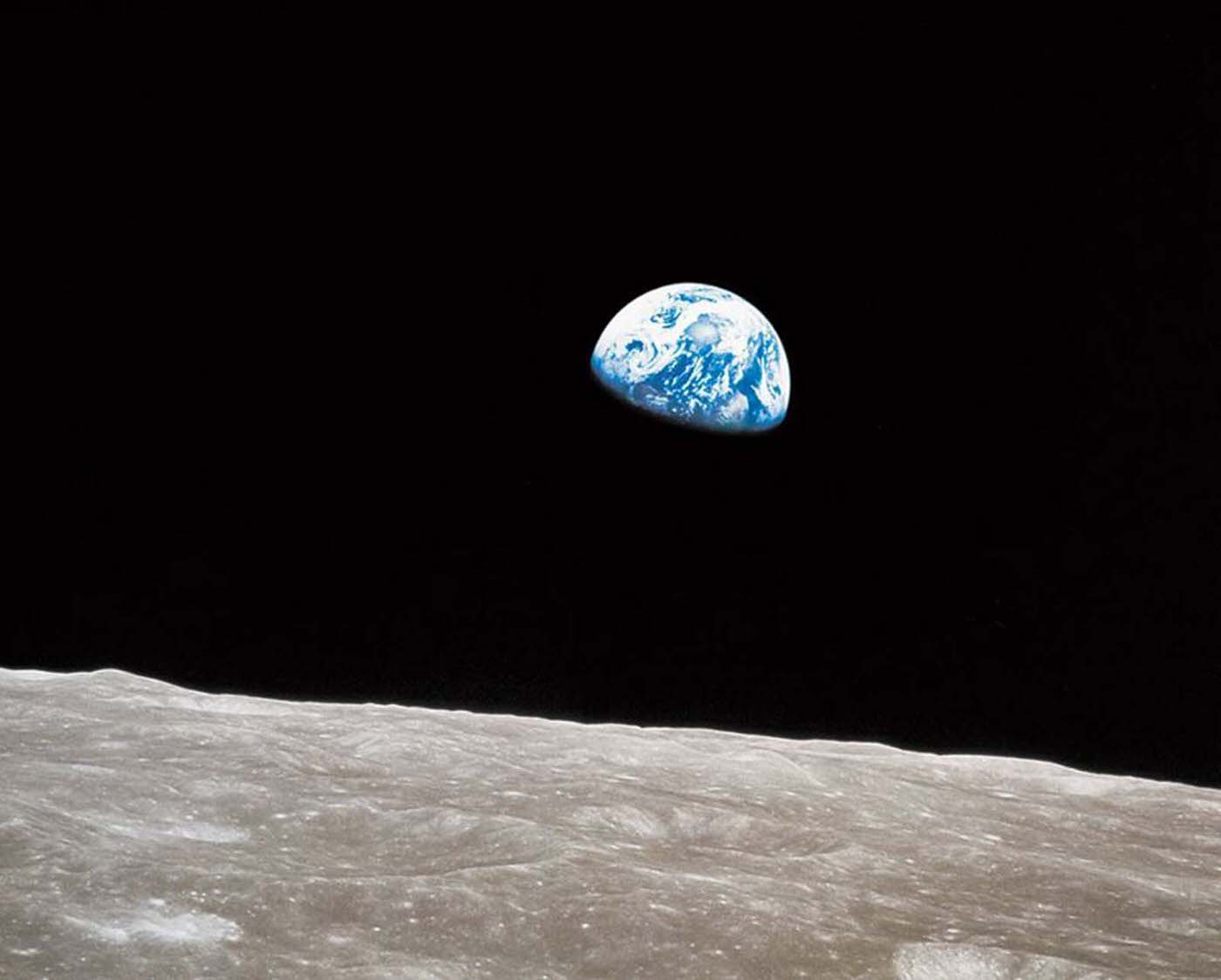
Earthrise is a photograph taken by astronaut Bill Anders on December 24, 1968, during the Apollo 8 mission to orbit the moon. The photograph shows the Earth rising above the horizon of the moon, a stunning view of the blue-white planet that helped to launch the environmental movement and inspired awe and wonder in people around the world.
The photograph was taken at a time when America was grappling with the Vietnam War and the civil rights movement, making the image of our planet from space all the more profound. Anders had snapped a black and white picture of the Earth before scrambling to find a color canister to capture the full-color view that would become one of the most iconic images of the 20th century.
The image of Earthrise helped to remind human beings of our place in the cosmos and the beauty, fragility, and interconnectedness of our planet. It also inspired a sense of environmental consciousness and a recognition that we must protect and preserve our home in the vastness of space.
#9 V-J Day In Times Square, 1945

On August 14, 1945, Alfred Eisenstaedt, one of the first four photographers hired by LIFE magazine, was capturing the mood on the streets of New York City to celebrate the end of World War II. In Times Square, Eisenstaedt found himself in the middle of the jubilant crowd when a sailor grabbed hold of a nurse, tilted her back, and kissed her. Eisenstaedt’s photograph of that passionate kiss distilled the relief and promise of that momentous day in a single moment of unbridled joy. It became the most famous and frequently reproduced picture of the 20th century, forming the basis of our collective memory of that transformative moment in world history.
#10 Albino Boy, Biafra, 1969

In 1969, British war photographer Don McCullin took a photo that would come to symbolize the suffering and tragedy of the Biafran War. The image features a 9-year-old albino boy, emaciated and near death from starvation. Despite already being in a pitiable situation, the boy was further ostracized and ridiculed by his peers because of his condition. The photo helped to galvanize public opinion and pressure governments to take action, leading to massive airlifts of food, medicine, and weapons to the region. McCullin's hope was that images like this one would awaken the conscience of the world and inspire action to help those in need. His work and that of other witnesses to the conflict ultimately led to the founding of Doctors Without Borders, which continues to provide vital medical support to those affected by war, epidemics, and disasters.
#11 Jewish Boy Surrenders In Warsaw, 1943
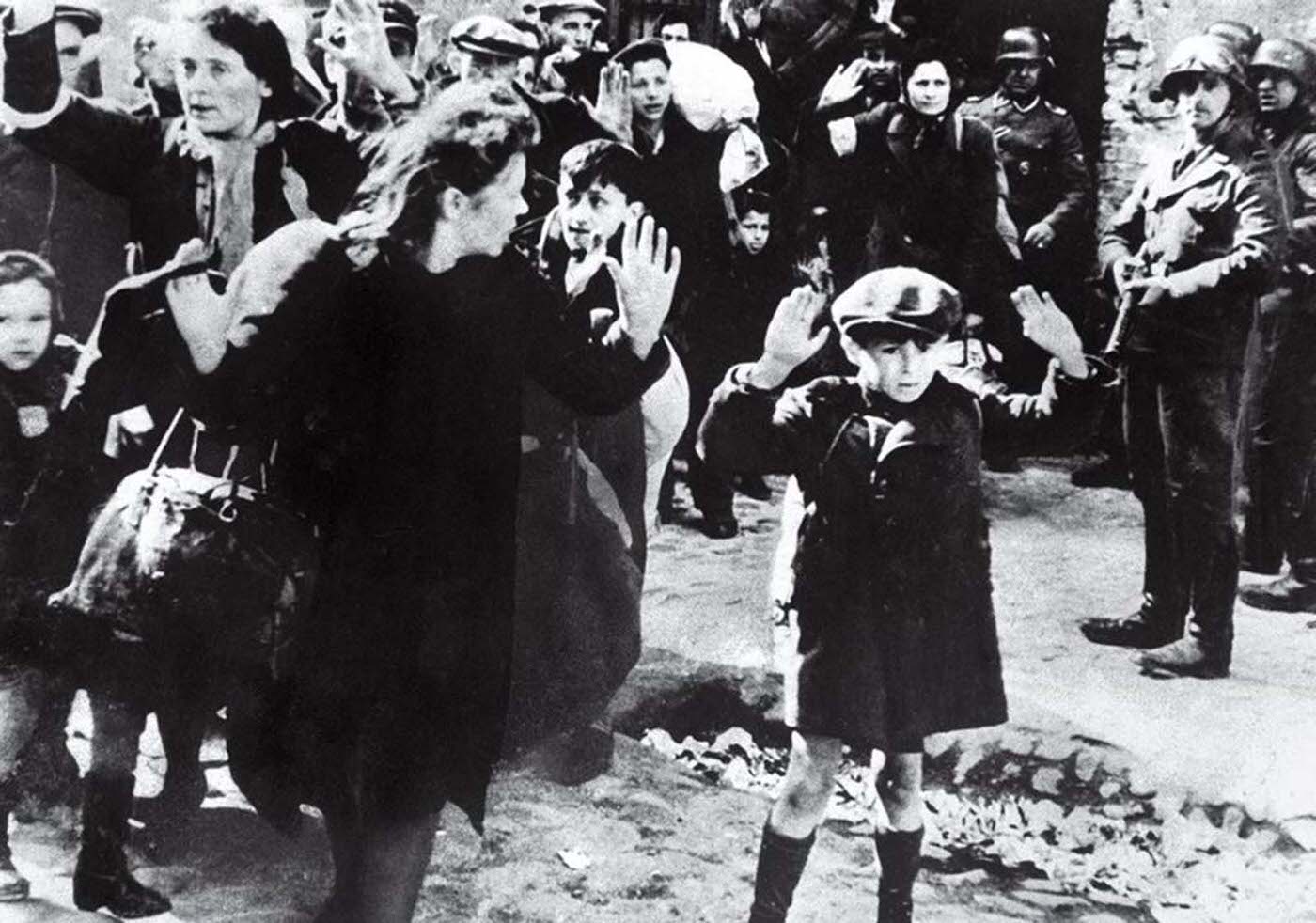
In this iconic photograph taken during the Holocaust, a terrified young Jewish boy raises his hands in surrender as German soldiers come to take him and other residents of the Warsaw ghetto away to concentration camps. The photo was one of many taken by SS Major General Jürgen Stroop, who documented his efforts to clear out the ghetto and boasted of his accomplishments in a victory album known as the Stroop Report. The images in the report, including the boy's surrender, were used as evidence against Stroop in the Nuremberg war-crimes trials, which resulted in his hanging near the ghetto in 1951. The boy in the photo, whose identity remains unknown, has become a symbol of the 6 million Jews who were killed by the Nazis during the Holocaust.
#12 Bloody Saturday, 1937

In the summer of 1937, Japan's army began its advance towards Shanghai, sparking a brutal conflict that caused mass panic and death in the streets. It wasn't until August 28, when Japanese bombers attacked the South Station in Shanghai, that the rest of the world truly saw the human toll of the fighting. Photographer H.S. Wong captured one of the most powerful images of the conflict: a wailing Chinese baby lying near his dead mother on the nearby tracks. Wong's photograph, dubbed "Bloody Saturday," was widely disseminated through newspapers, magazines, and newsreels, reaching an audience of over 136 million people. It came to represent the plight of China and the brutality of Japan, and helped to sway public opinion in favor of intervention in what would become the Second World War.
#13 Migrant Mother, 1936

In 1936, during the Great Depression, photographer Dorothea Lange captured one of the most iconic images of the era: Migrant Mother. The photograph features Frances Owens Thompson, a 32-year-old mother of seven, and her children, who were living in a crude lean-to tent at a pea-pickers camp in Nipomo, California. The family had no work and had resorted to selling the tires from their car and killing birds for food. Lange tightly framed the shot to emphasize the mother's worn and resigned expression, capturing the essence of the suffering that was being inflicted upon millions of Americans. The image became a symbol of the human cost of the Depression and helped to draw attention to the plight of those who were struggling. Lange's work for the Resettlement Administration resulted in the authorities sending 20,000 pounds of food to the camp, and Migrant Mother has since become one of the most enduring and recognizable images of the 20th century.
#14 The Hindenburg Disaster, 1937

On May 6, 1937, the LZ 129 Hindenburg, a majestic zeppelin, caught fire and burst into flames while approaching the Lakehurst Naval Air Station in New Jersey. The disaster claimed 36 lives and marked the end of the era of airships. Among the photographers who captured the tragedy was Sam Shere of the International News Photos service. Shere's image of the Hindenburg in flames became one of the most iconic photographs of the 20th century, published on front pages around the world and in LIFE magazine. The photo remains a powerful reminder of the dangers of human fallibility and the catastrophic consequences that can result. The disaster also inspired the anguished cries of radio announcer Herbert Morrison, whose emotional response became a famous recording and a symbol of the tragedy.
#15 Dalí Atomicus, 1948

In 1948, photographer Philippe Halsman set out to capture the essence of his friend and collaborator, the Surrealist painter Salvador Dalí. Inspired by one of Dalí's own paintings, Halsman created an elaborate scene that included a floating chair, an easel suspended by wires, and three cats and a bucket of water thrown into the air. It took 26 takes to capture the perfect composition, but the resulting image, published in LIFE magazine, became one of the most iconic portraits of the 20th century. The photograph, titled "Dalí Atomicus," evokes the Surrealist sensibility of Dalí's own work and redefined portrait photography by bringing subjects into sharp focus as they moved before the camera. Halsman's approach inspired generations of photographers to collaborate more closely with their subjects.
#16 Leap Into Freedom, 1961

The photo captures 19-year-old East German border guard Hans Conrad Schumann leaping over barbed-wire-and-cinder-block barrier, leaving behind his rifle, to escape to West Berlin on August 15, 1961. This moment was captured by Associated Press photographer Peter Leibing who was tipped off about the possible defection. The photo of Schumann's leap became an iconic image that symbolized the desire for freedom and inspired people to oppose the Iron Curtain.
#17 Emmett Till, 1955

A black teenager from Chicago named Emmett Till was visiting relatives in Mississippi when he was brutally murdered by white men. Till allegedly whistled at a white woman, which enraged her husband and half-brother, who beat, shot, and lynched Till before throwing his body in the Tallahatchie River. Despite overwhelming evidence of their guilt, the murderers were acquitted by an all-white jury. Till’s mother, Mamie, insisted on an open casket funeral, and a photo of her gazing at her son’s mutilated body was published in Jet magazine, forcing the world to confront the brutality of racism in America.
#18 Cotton Mill Girl, 1908

This photo was taken by Lewis Hine, an investigative photographer for the National Child Labor Committee, who sought to expose the brutal reality of child labor in the early 20th century. Hine often had to disguise himself to gain access to factories and mills where children were forced to work long hours in dangerous conditions. In November 1908, he photographed Sadie Pfeifer, a young girl who was working in a cotton-spinning mill in Lancaster, South Carolina. Pfeifer was just one of the many children whose lives were shattered by the harsh realities of industrialization. Hine's photographs of child laborers helped to galvanize public opinion and eventually led to regulatory legislation that reduced the number of child laborers by half between 1910 and 1920.
#19 The Pillow Fight, 1964

This photograph, taken by Harry Benson in the George V Hotel in Paris in 1964, shows the Beatles engaged in a pillow fight on the night they learned that "I Want to Hold Your Hand" had hit No. 1 in the U.S. The image captures the exuberant energy and boyish charm that helped make the Beatles a worldwide phenomenon and a symbol of hope and optimism in the wake of John F. Kennedy's assassination. Benson initially resisted covering the story but was won over by the band's talent and charisma. He went on to accompany the Beatles on their trip to New York City the following month, which kick-started the British Invasion and led to decades of collaboration with the group.
#20 Behind Closed Doors, 1982

In 1982, photographer Donna Ferrato captured a moment of domestic violence between Garth and Lisa in their suburban New Jersey home. Ferrato, who had come to know the couple through a photo project on wealthy swingers, documented the incident in which Garth beat his wife while she cowered in a corner. Ferrato's images were initially rejected by magazine editors, so she published them in her book Living With the Enemy in 1991. The book chronicled domestic-violence episodes and their aftermaths, including those of the pseudonymous Garth and Lisa. Ferrato's work helped bring violence against women out of the shadows and forced policymakers to confront the issue. The Violence Against Women Act was passed by Congress in 1994, increasing penalties against offenders and helping train police to treat it as a serious crime.
#21 Iraqi Girl at Checkpoint, 2005
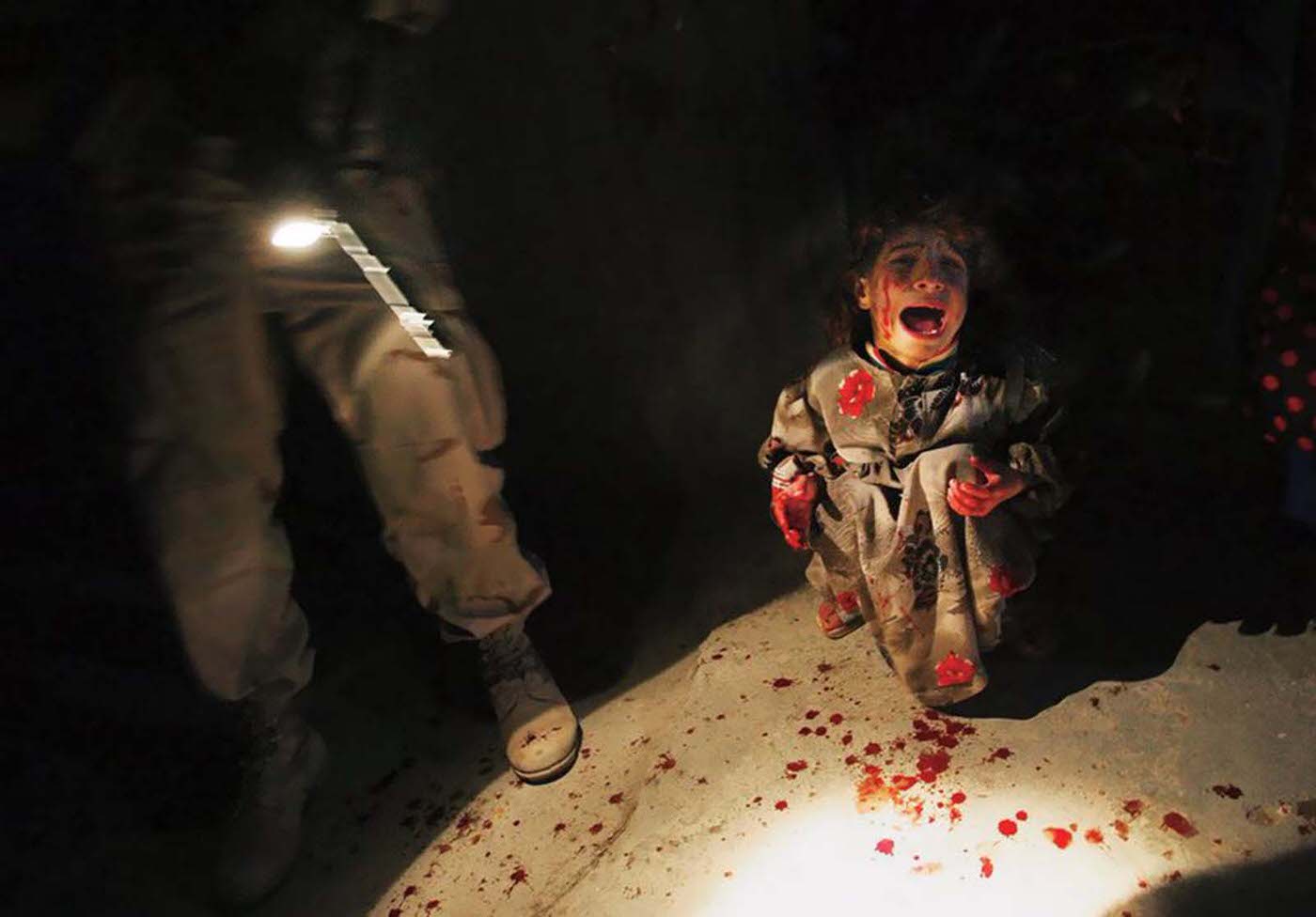
American photojournalist Chris Hondros captured this picture of Samar Hassan, a little girl, moments after her parents were shot dead by U.S. soldiers at a checkpoint in Iraq in January 2005. Hondros was embedded with the Army unit when the shooting happened and transmitted his photographs immediately, which were published worldwide the following day. The images led to a revision of U.S. military checkpoint procedures and forced the public to question why American soldiers were killing the people they had come to protect. The impact of the photos was significant and added to the growing skepticism towards the war in Iraq.
#22 Gorilla In The Congo, 2007

Brent Stirton's photograph captures the image of Senkwekwe, a silverback mountain gorilla, being carried out of Virunga National Park in the Democratic Republic of Congo in 2007. Senkwekwe and several other gorillas were shot dead due to the violent conflict that had engulfed the park, which is home to half of the world’s critically endangered mountain gorillas. The park was under siege by people illegally harvesting wood to be used in a charcoal industry that grew in the wake of the Rwandan genocide.
#23 Mushroom Cloud Over Nagasaki, 1945

On August 9, 1945, the United States dropped an atomic bomb nicknamed Fat Man on Nagasaki, Japan, just three days after the bombing of Hiroshima. The resulting explosion created a mushroom cloud that rose 45,000 feet into the air, unleashing a catastrophic wave of destruction that killed an estimated 80,000 people in the city. Lieutenant Charles Levy, the bombardier on the plane that dropped the bomb, shot 16 photographs of the mushroom cloud as it billowed up from the ground. Levy's image, the only one to show the full scale of the mushroom cloud from the air, became one of the defining images of the atomic age.
While officials censored photos of the bomb's devastation, Levy's image was circulated widely and helped to shape American opinion in favor of the nuclear bomb. The image became a symbol of American power and technological prowess, and it reinforced the idea that the use of atomic weapons was a necessary and justifiable means to end the war.
#24 Fire Escape Collapse, 1975.

Stanley Forman's photograph of the fire escape collapse in 1975 is considered controversial due to the ethical debate surrounding when disturbing images are worth sharing. While the photo earned Forman the Pulitzer Prize and led to stricter fire-escape-safety codes, many readers objected to its publication. The photograph freezes a moment of tragedy and captures the expression on young Tiare's face, but some people argue that it is invasive to the privacy of the victims and their families.
#25 A Man On The Moon, 1969

On July 20, 1969, Buzz Aldrin became the second man to set foot on the moon, just moments after Neil Armstrong had made history as the first. However, it was Aldrin who left his mark in one of the most iconic photographs of all time. In the image, Aldrin is seen standing on the lunar surface, with Armstrong's reflection visible in his visor. Despite not having the action or patriotic symbolism of other photos from the mission, this image has endured as a symbol of human achievement and the wonder of space exploration.
#26 Guerillero Heroico, 1960
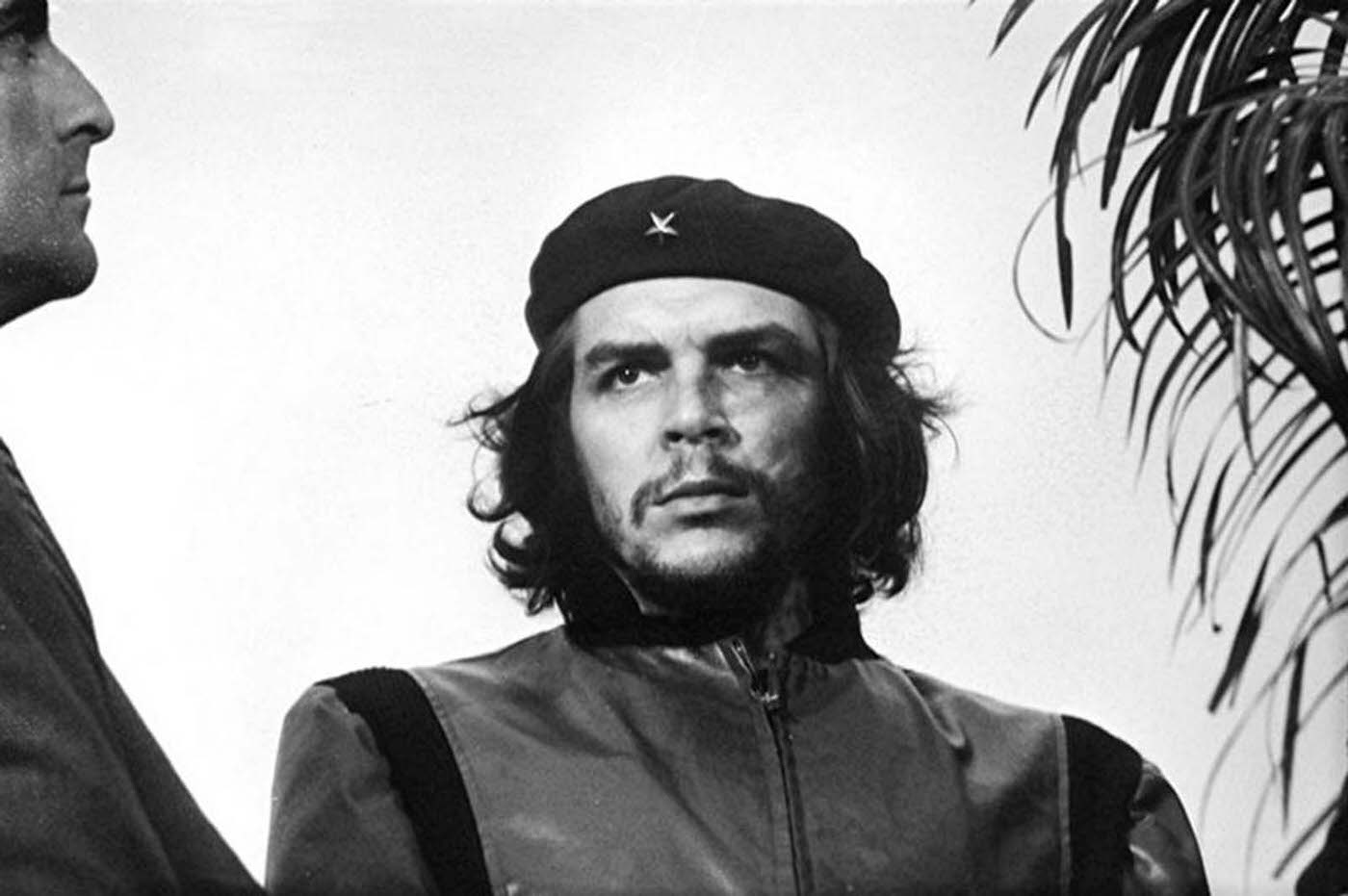
In 1960, Cuban photographer Alberto Korda captured one of the most iconic images of the 20th century: Guerillero Heroico. The photograph features Che Guevara, the young revolutionary who had become a key ally of Fidel Castro. Korda had taken the photo as an afterthought while covering Castro's funeral, and it went unpublished by the newspaper. But after Guevara's death in Bolivia in 1967, the Cuban government embraced him as a martyr for the revolutionary movement, and Korda's image of him became its most enduring symbol. The photograph has since been appropriated by artists, activists, and advertisers around the world, appearing on everything from protest art to soft drinks. It has become a cultural shorthand for rebellion and is one of the most recognizable and reproduced images of all time.
#27 View From The Window At Le Gras, 1826

The first known permanent photograph, "View From The Window At Le Gras," was made in 1826 by Joseph Nicéphore Niépce, an inventor interested in lithography. He used a camera obscura to capture and project an image of the view outside his studio window onto a treated pewter plate, which retained a crude copy of the scene after many hours of exposure to sunlight. Niépce's invention laid the groundwork for the development of photography, which would be advanced further by his work with artist Louis Daguerre and his sharper daguerreotype images.
#28 Hand Of Mrs. Wilhelm Röntgen, 1895

In 1895, Wilhelm Röntgen took the first medical x-ray and captured an image of his wife Anna Bertha’s hand, specifically the bones in her hand. Röntgen had been experimenting with a cathode tube that emitted different frequencies of electromagnetic energy and discovered that certain rays could penetrate solid objects and expose photographic paper. He used these rays, which he named x-rays, to create shadowy images of inanimate objects and finally, one animate one. The picture of Anna’s hand caused a sensation and led to the revolutionizing of the diagnosis and treatment of hidden injuries and illnesses.
#29 Flag Raising On Iwo Jima, 1945

During World War II, the American military sought control of the strategically located island of Iwo Jima in order to use it as an air base to attack Japan. After weeks of brutal fighting, the Americans finally captured Mount Suribachi on February 23, 1945. In an effort to boost morale, a commander ordered a larger American flag to be raised on the mountain. Joe Rosenthal, a photographer for the Associated Press, captured the moment when five Marines and a Navy corpsman hoisted the flag. Rosenthal almost missed the shot but managed to capture the iconic image, which became a symbol of the war and was widely reproduced.
#30 Hitler At A Nazi Party Rally, 1934

This photograph was taken by Heinrich Hoffmann, who was Hitler's personal photographer and a key figure in the regime's propaganda machine. The photo shows Hitler at the center of a grand spectacle during the Bückeberg Harvest Festival on September 30, 1934. Hoffmann's rigidly symmetrical composition captures the adoration of Hitler's followers as they salute him with the Nazi salute. Hoffmann's photographs, along with the propaganda films of Leni Riefenstahl and the stark graphics of Nazi banners, helped to create an all-pervasive image of Aryan superiority that convinced many Germans to follow Hitler into war. The power of photography to shape public opinion and move nations is evident in Hoffmann's expertly staged propaganda, which played a significant role in plunging the world into war.
#31 Gandhi And The Spinning Wheel, 1946
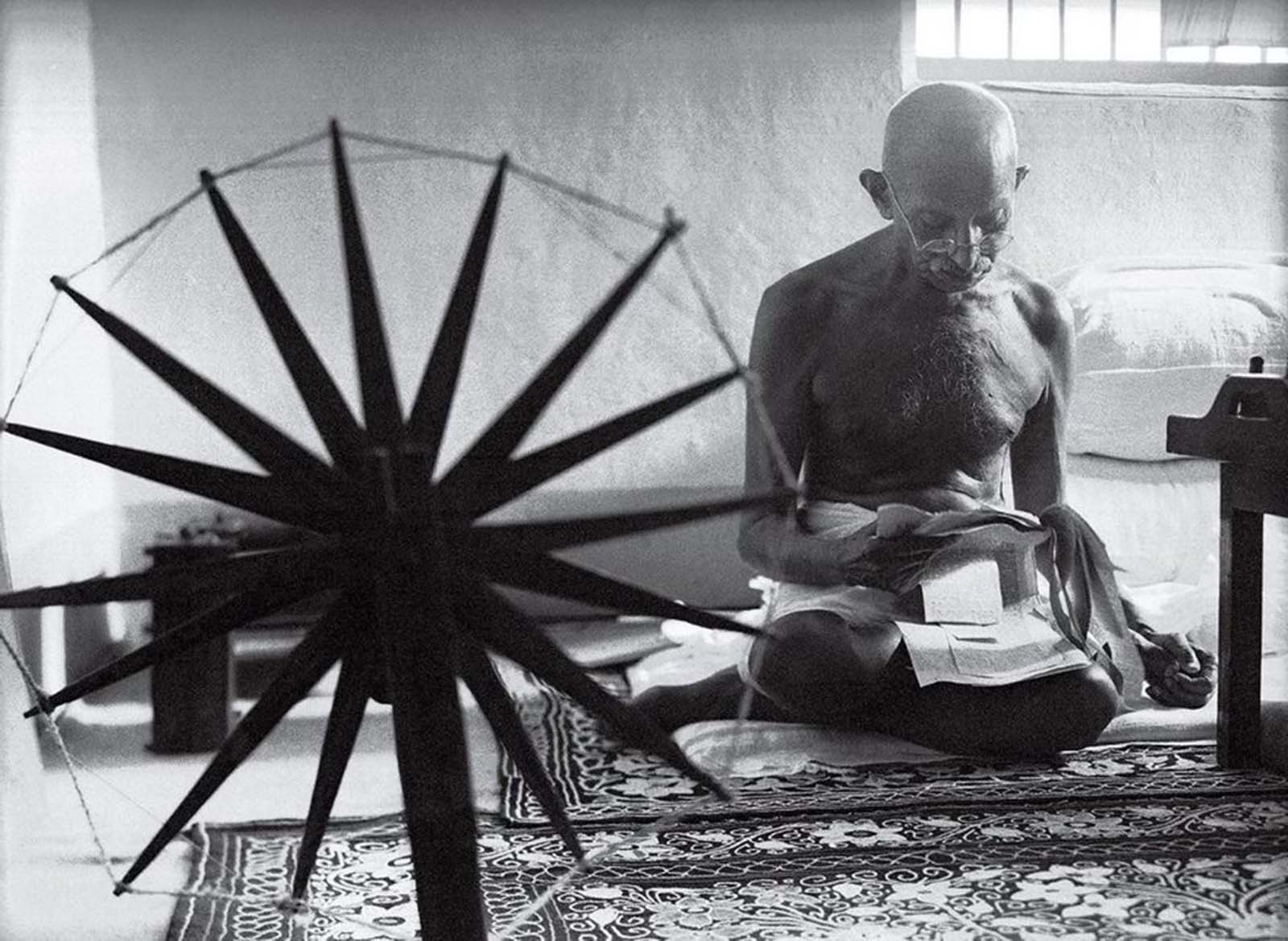
This photograph, taken by Margaret Bourke-White, shows Mohandas Gandhi sitting next to a charkha, a portable spinning wheel that became a symbol of the Indian campaign for independence from British rule. Gandhi had originally taken up spinning as a source of personal comfort during his imprisonment at Yeravda prison in Pune, India, but he later encouraged his countrymen to make their own homespun cloth as a way of asserting their independence from British goods. When Bourke-White came to photograph Gandhi, she was told by his secretary that she had to learn to spin before photographing the leader. The resulting image of Gandhi reading the news alongside his charkha became an iconic symbol of the slain civil-disobedience crusader and helped to cement his reputation as a saintly man of peace.
#32 Fetus, 18 Weeks, 1965

This photograph, taken by Lennart Nilsson for a 1965 issue of LIFE magazine, was part of a groundbreaking photo essay titled "Drama of Life Before Birth." The essay featured images of developing fetuses, which had been photographed outside the womb for medical reasons. Nilsson had struck a deal with a Stockholm hospital to be notified whenever a fetus was available for photography. In a dedicated room with specialized lighting and lenses, Nilsson arranged the fetuses to appear as if they were floating in the womb. The images caused a sensation when they were first published, as they provided the public with an unprecedented view of human life at its earliest stages. However, the photos have also been widely appropriated by anti-abortion activists to advance their cause, despite Nilsson never taking a public stance on abortion.
#33 D-Day, 1944

This photograph was taken by Robert Capa, the only still photographer to land on Omaha Beach with the troops during the D-Day invasion of Normandy on June 6, 1944. The image captures Private First Class Huston Riley, who had just waded ashore through deep water while under enemy fire. Capa spent an hour and a half taking photographs under constant danger, and his images were rushed back to LIFE magazine's London offices. Despite most of the film showing no images after processing, a few frames survived and were included in the magazine's June 19 issue. Capa's photographs gave the American public a soldier's view of the dangers of war and helped to shape the collective memory of the epic clash that saved civilization.
#34 The Face of AIDS, 1990

This photograph, taken by Therese Frare and published in LIFE magazine in 1990, shows David Kirby on his deathbed surrounded by his family. Kirby, a 32-year-old man, had died of AIDS, a disease that was widely misunderstood and largely out of public view at the time. Frare's photograph humanized the disease, showing how it devastated not just its victims but also their loved ones. The image helped to raise critical awareness about AIDS at a moment when the disease was still uncontrolled and sufferers were lobbying the federal government to speed the development of new drugs. Despite controversy surrounding the use of the photo in a Benetton advertisement, Kirby's family believed that it helped to show the truth about AIDS and raise awareness about the disease. The red ribbon, which became a symbol of compassion and resilience in the face of the AIDS epidemic, was not yet widely recognized at the time the photograph was published.
#35 First Cell-Phone Picture, 1997

In 1997, software entrepreneur Philippe Kahn was waiting in a Northern California maternity ward for the birth of his daughter Sophie. Bored, he built a device that could send a photo of his newborn to friends and family in real time. The setup was crude: a digital camera connected to his flip-top cell phone, synched by a few lines of code he had written on his laptop in the hospital. But the effect was transformative. Kahn's device captured his daughter's first moments and transmitted them instantly to more than 2,000 people. This invention laid the groundwork for the development of the first commercially available integrated camera phone in Japan in 2000. The introduction of camera phones to the U.S. market a few years later and the subsequent rise of smartphones and photo-sharing applications like Instagram and Snapchat forever altered how we communicate and experience the world. Today, phones are used to send hundreds of millions of images around the world every day, including a fair number of baby pictures.
#36 Raising a Flag Over the Reichstag, 1945

On May 2, 1945, Red Army soldier Yevgeny Khaldei arrived in Berlin armed with his Leica III rangefinder and a massive Soviet flag that his uncle had fashioned for him from three red tablecloths. Two days prior, Adolf Hitler had committed suicide, but the war still raged. Khaldei made his way to the Reichstag, where he and three soldiers climbed onto the parliament building's blood-soaked parapet. Khaldei knew he had the shot he had hoped for and was euphoric. In printing, Khaldei intensified the smoke, darkened the sky, and scratched out part of the negative to craft a romanticized scene that became an instant propaganda icon. The flag jutting from the heart of the enemy exalted the nobility of communism, proclaimed the Soviets the new overlords, and hinted that Premier Joseph Stalin would soon hoist a cold new iron curtain across the land.
#37 Famine in Somalia, 1992

In 1992, American photographer James Nachtwey traveled to Somalia to document the spiraling famine, which had been largely ignored by the West despite the armed conflict and soaring food prices in Mogadishu. With support from the International Committee of the Red Cross, Nachtwey captured haunting images, including one of a woman waiting to be taken to a feeding center in a wheelbarrow. After it was published as part of a cover feature in the New York Times Magazine, public support increased significantly, resulting in the Red Cross's largest operation since World War II. One and a half million people were saved, and the ICRC's Jean-Daniel Tauxe credited Nachtwey's pictures with making the difference.
#38 Muhammad Ali vs. Sonny Liston, 1965

In 1965, sports illustrated photographer Neil Leifer captured what many consider to be the greatest sports photo of the century during the heavyweight boxing match between Muhammad Ali and Sonny Liston in Lewiston, Maine. One minute and 44 seconds into the first round, Ali's right fist connected with Liston's chin and Liston went down. Leifer snapped the photo of Ali towering over his opponent and taunting him, "Get up and fight, sucker!" The powerful overhead lights and thick clouds of cigar smoke had turned the ring into the perfect studio, and Leifer's perfectly composed image captures Ali's strength and poetic brashness. The photo came to represent not just a boxing match but also the larger cultural and political upheavals of the 1960s.
#39 The Situation Room, 2011

On May 1, 2011, White House photographer Pete Souza captured a historic moment in the Situation Room during the raid on Osama bin Laden's compound in Pakistan. Souza's photo does not show the raid or bin Laden, but instead captures the tension in the room as President Barack Obama and other officials watched the secret operation in real time. Obama made the decision to launch the attack, but like everyone else in the room, he was a spectator to its execution. Secretary of State Hillary Clinton covers her mouth, waiting to see the outcome. Later that evening, Obama announced in a national address that bin Laden had been killed. Souza's photo, with its palpable tension, remains the only public image of that momentous occasion.
#40 Nuit de Noel, 1963
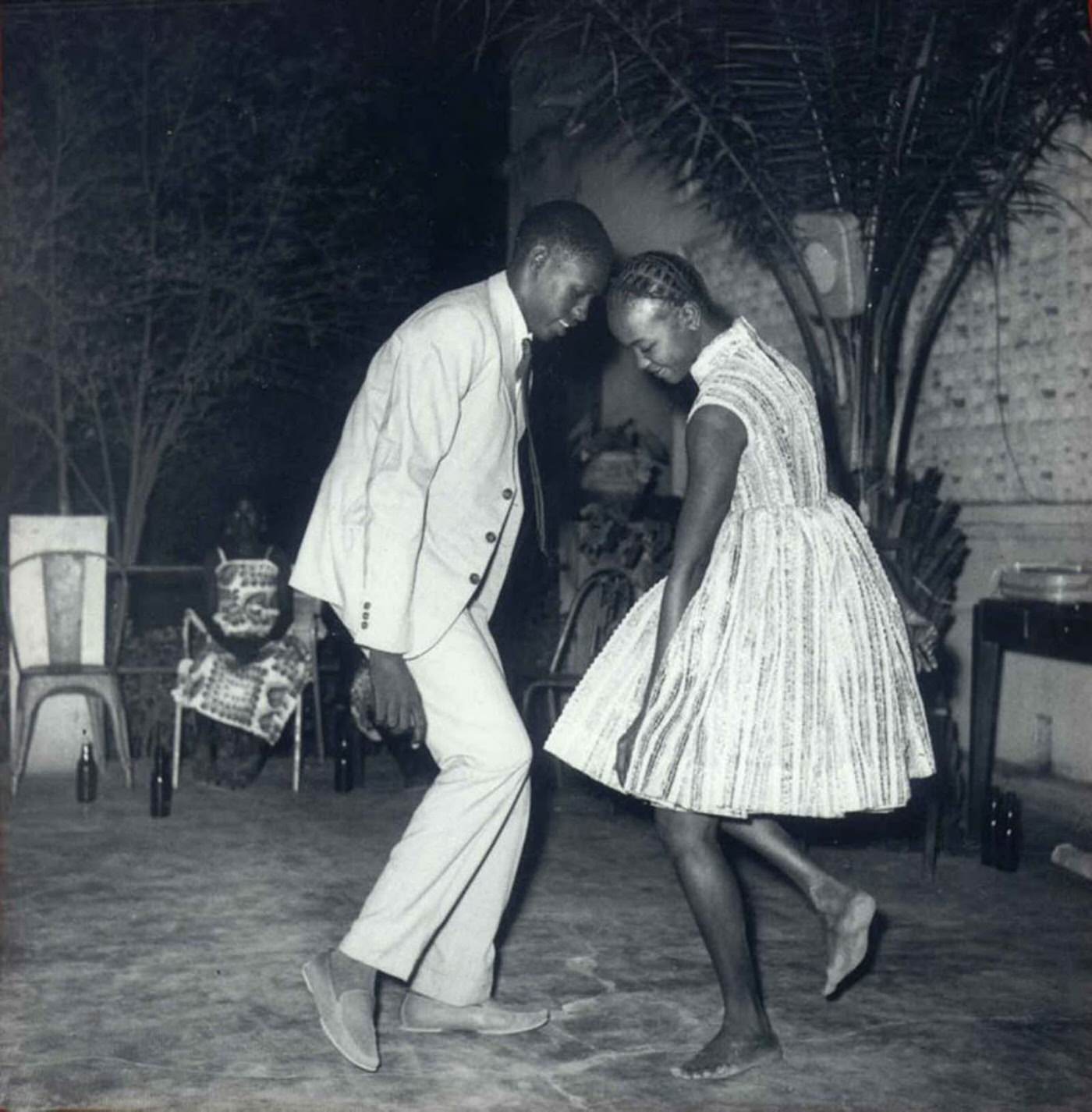
Malian photographer Malick Sidibé captured the subtle and profound changes reshaping his nation as French colonial rule ended in 1960. Known as the Eye of Bamako, Sidibé took thousands of photos that became a real-time chronicle of the euphoric zeitgeist gripping the capital, a document of a fleeting moment. On Christmas Eve in 1963, Sidibé happened upon a young couple lost in each other's eyes at a club. His "talent to observe" allowed him to capture their quiet intimacy, heads brushing as they danced on an empty dance floor. Sidibé's photos are a testament to the music that freed the people, allowing young men and women to get close to each other, hold hands, and dance. His photos are a reminder of the new era that had begun and the liberation it brought.
#41 Execution, 1968
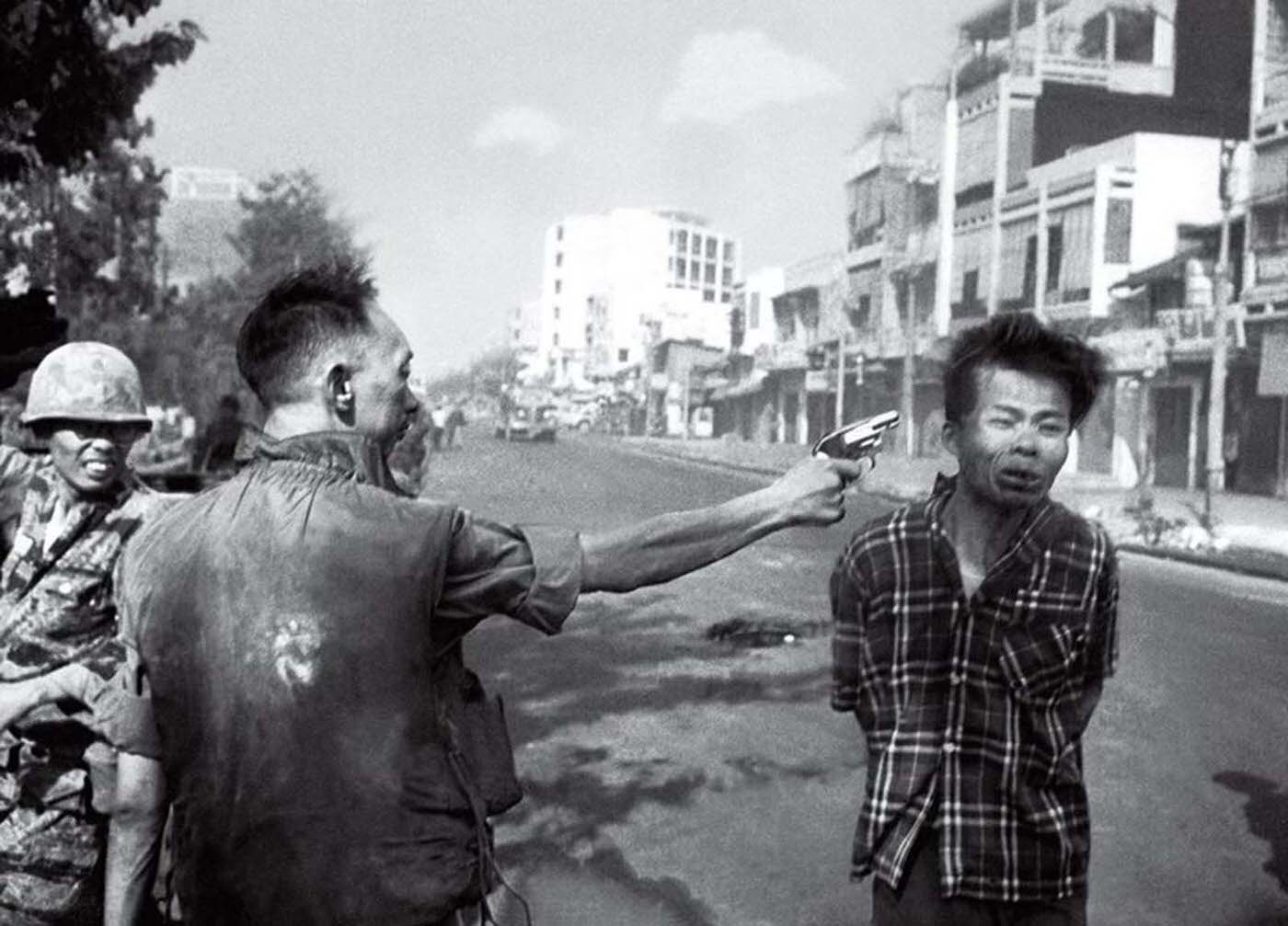
On February 1, 1968, Associated Press photographer Eddie Adams captured a stunning act of casual brutality on the streets of Saigon. Brigadier General Nguyen Ngoc Loan, chief of the national police, executed Nguyen Van Lem, the captain of a terrorist squad who had just killed the family of one of Loan's friends. Adams thought he was watching the interrogation of a bound prisoner, but Loan calmly raised his pistol and fired a bullet through Lem's head. The moment of Lem's death, frozen in Adams' photo, symbolized for many the brutality of the Vietnam War. The photo's widespread publication helped galvanize growing sentiment in America about the futility of the fight and ushered in a more intimate level of war photojournalism. Adams won a Pulitzer Prize for the image, and he later commented, "Still photographs are the most powerful weapon in the world."
#42 Black Power Salute, 1968

At the 1968 Olympic Games in Mexico City, American sprinters Tommie Smith and John Carlos made a powerful protest on the medal stand. Just before "The Star-Spangled Banner" began to play, Smith, the gold medalist, and Carlos, the bronze winner, bowed their heads and raised black-gloved fists in the air. Their message was clear: Before we salute America, America must treat blacks as equal. John Dominis, a life photographer known for capturing unexpected moments, shot a close-up of Smith in black socks, his running shoes off, in a gesture meant to symbolize black poverty. Published in life, Dominis' image turned the somber protest into an iconic emblem of the turbulent 1960s.
#43 Soweto Uprising, 1976

The Soweto Uprising of 1976 in South Africa began as a protest against the introduction of mandatory Afrikaans-language instruction in township schools. Thousands of students took to the streets, including 13-year-old Hector Pieterson. Skirmishes broke out with the police, and when students hurled stones, the police shot real bullets into the crowd. Photojournalist Sam Nzima was covering the protests for the World when he captured a photo of Pieterson falling down as gunfire rained above. Terrified high schooler Mbuyisa Makhubu picked up Pieterson's lifeless body and ran with Pieterson's sister, Antoinette Sithole. Nzima's photo of Pieterson became an iconic image of the violence and oppression of the apartheid regime, sparking international opposition that eventually helped topple the racist system.
#44 The Horse In Motion, 1878

In 1878, photographer Eadweard Muybridge set out to answer the question of whether a horse becomes fully airborne when it trots or gallops. Commissioned by Leland Stanford, a former California governor and railroad tycoon, Muybridge developed a way to take photos with an exposure lasting a fraction of a second and arranged 12 cameras along a track on Stanford's estate. As a horse sped by, it tripped wires connected to the cameras, which took 12 photos in rapid succession. Muybridge developed the images on site and revealed that a horse is completely aloft with its hooves tucked underneath it for a brief moment during a stride. This revelation, imperceptible to the naked eye but apparent through photography, marked a new purpose for the medium. It could capture truth through technology. Muybridge's stop-motion technique was an early form of animation that helped pave the way for the motion-picture industry, born a short decade later.
#45 Abraham Lincoln, 1860

In February 1860, Abraham Lincoln arrived in New York City to speak at the Cooper Union, knowing the importance of image. Before taking to the podium, he stopped at the photography studio of Mathew B. Brady, who set him in a statesmanlike pose and retouched the image to improve his looks. Brady's portrait of Lincoln soon appeared in publications like Harper's Weekly and on election posters and buttons, making it the most powerful early instance of a photo used as campaign propaganda. The portrait propelled Lincoln from the edge of greatness to the White House, where he preserved the Union and ended slavery.
#46 Bandit’s Roost, Mulberry Street, 1888

Jacob Riis' photograph, taken around 1888, shows a group of young men and boys huddled together in a dark and dingy alleyway known as "Bandit's Roost" on Mulberry Street in New York City. Riis was a pioneering photojournalist who exposed the harsh living conditions of immigrants in the city's slums. His use of flash photography and documentation of the appalling living conditions of the urban poor helped to spark social and political reform. This photograph became one of the most iconic images of the Gilded Age and helped to bring about much-needed change to the living conditions of the urban poor.
#47 Milk Drop Coronet, 1957
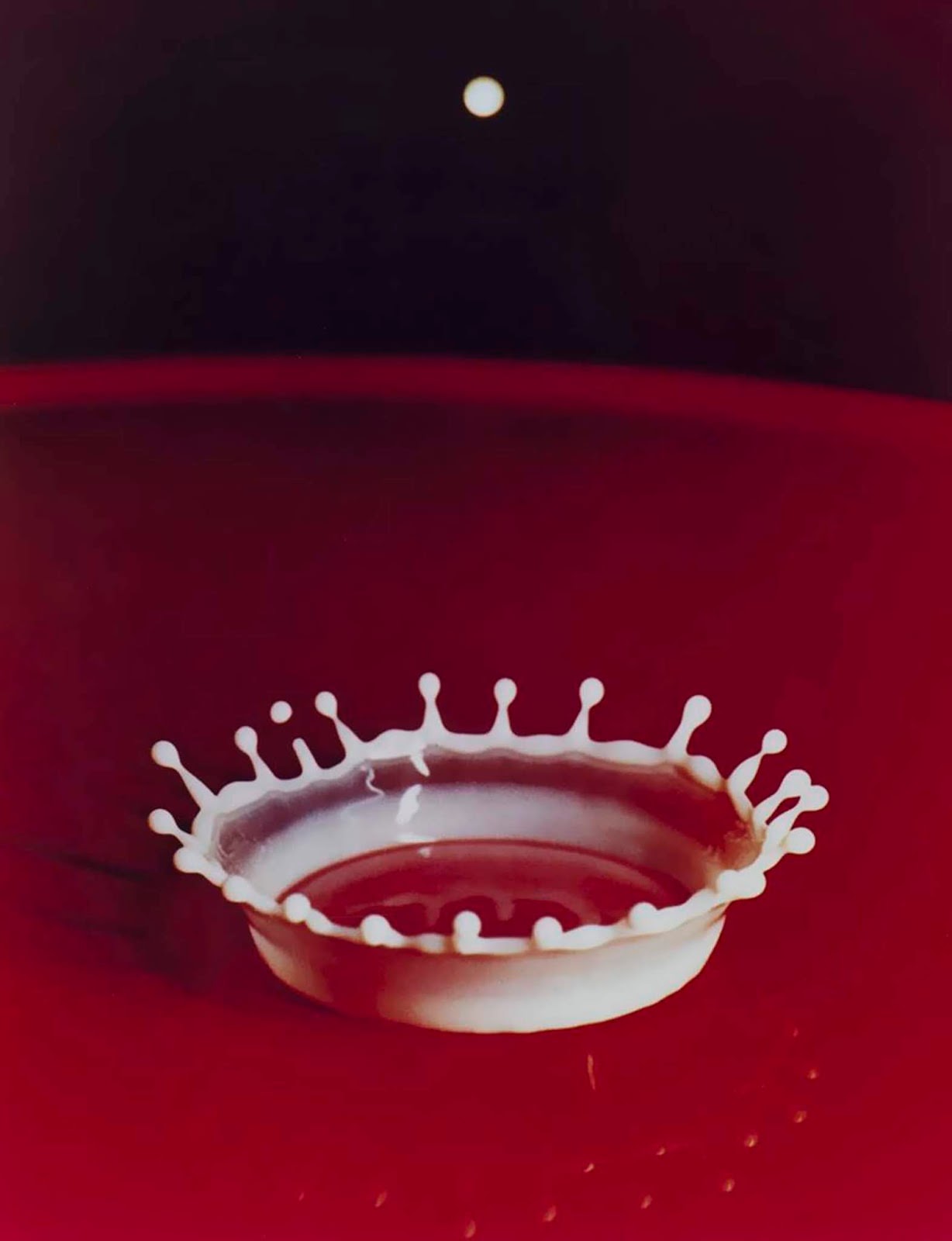
Harold Edgerton's Milk Drop Coronet freeze-frames the impact of a single drop of milk on a table, creating a crown of liquid that lasts for only a millisecond. The photograph, taken at Edgerton's lab at MIT, combined high-tech strobe lights with camera shutter motors to capture moments imperceptible to the naked eye. The picture demonstrated how photography could advance human understanding of the physical world, and the technology Edgerton used to take it laid the foundation for the modern electronic flash. The photograph remains a quintessential example of photography's ability to make art out of evidence.
#48 Surfing Hippos, 2000
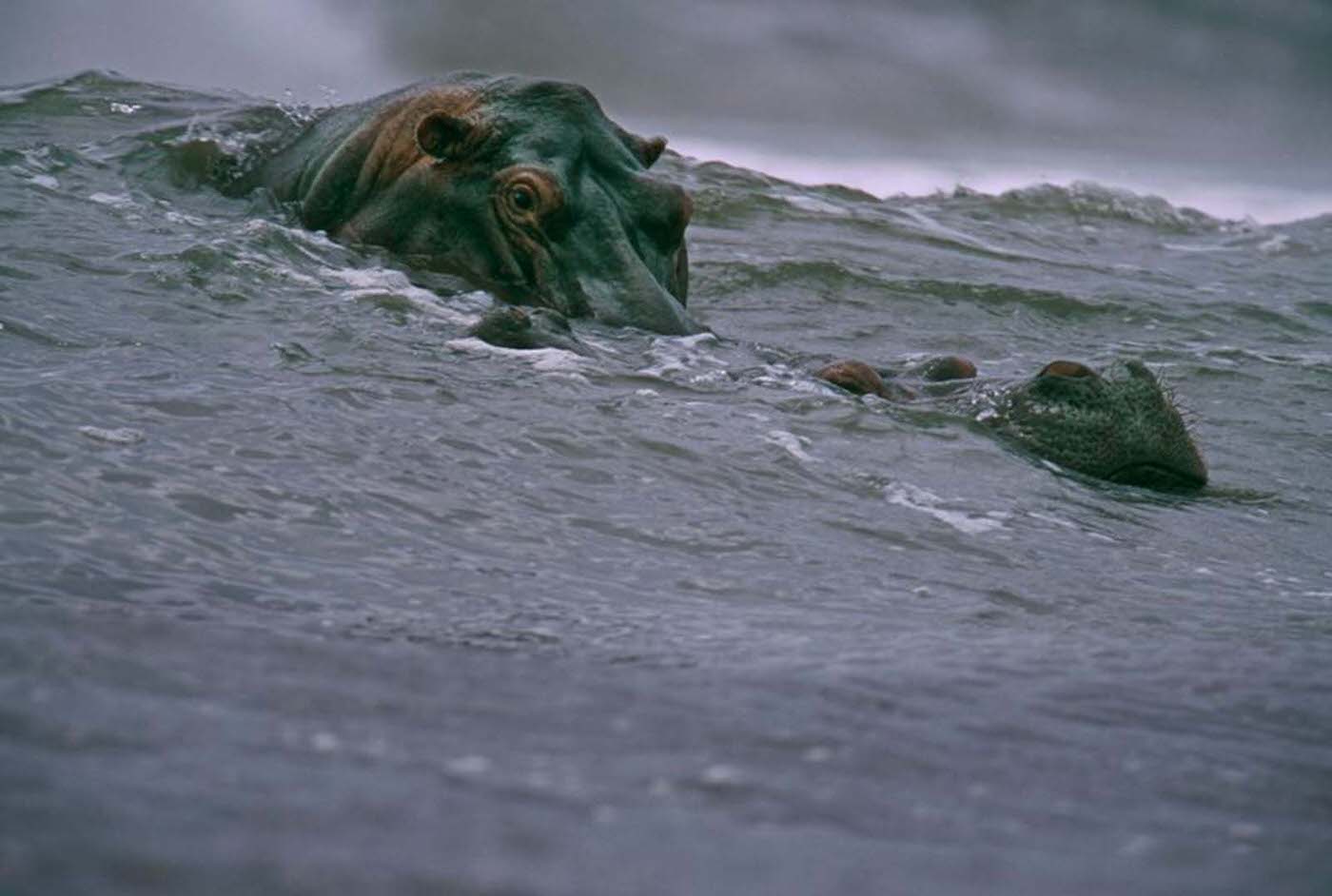
Michael Nichols' photograph captures an unusual sight of hippos swimming in the Atlantic Ocean, taken during an expedition from Congo to Gabon, led by the National Geographic explorer Michael Fay. The photograph is not only a visual delight but also has a significant impact on preserving the wilderness in Africa. It inspired the President of Gabon, Omar Bongo, to create a system of national parks that cover 11 percent of the country, ensuring that there will be at least some space left for the wild animals.
#49 Moonlight: The Pond, 1904

Edward Steichen’s photograph of a wooded scene in Mamaroneck, N.Y., captured in 1904 is a perfect example of Pictorialism, a photographic movement in the early 20th century that sought to blur the lines between photography and painting. Steichen hand-colored the black and white prints with blue tones and may have even added the glowing moon to create an ethereal image. His photograph challenged the idea of photographic authenticity and influenced the creation of staged and manipulated images. Even today, Moonlight continues to resonate, and a print sold for nearly $3 million in 2006.
#50 The Vanishing Race, 1904

Photographer Edward S. Curtis sought to document Native American tribes in the early 20th century, capturing their dress, ceremonies, life and manners, in an effort to show them as a noble people. His 20-volume chronicle of 80 tribes, The North American Indian, is a lasting record of the indigenous peoples of the United States. One of his most famous images, The Vanishing Race, shows Navajo riders disappearing into the distance, symbolizing the plight of the Indians, who Curtis believed were "passing into the darkness of an unknown future". However, Curtis' work, which cemented the perception of Native Americans as relics of a dying people, also perpetuated a stereotype that still exists today.
#51 Betty Grable, 1943

Betty Grable was a Hollywood starlet whose beautiful legs and platinum blonde hair made her one of the most popular pin-up models of World War II. In 1943, Frank Powolny, a photographer for 20th Century Fox, took publicity pictures of Grable for the film "Sweet Rosie O'Grady." He captured a shot of her from behind, which became one of the earliest and most popular pin-up images among American troops. Soon, her posters were requested by thousands of soldiers and became a symbol of the "girl back home" for homesick servicemen. Grable's image was tacked on walls of barracks, painted on bomber fuselages, and carried close to soldiers' hearts. Her popularity among troops rallied them to fight during the war. Grable's smile and legs were said to be insured for a million dollars with Lloyd's of London, and she signed hundreds of her pinups every month during the war.
#52 Case Study House No. 22, Los Angeles, 1960

In 1960, photographer Julius Shulman captured the essence of modernist architecture with his photograph of Case Study House No. 22 in Los Angeles, designed by architect Pierre Koenig. The image features two women in cocktail dresses seemingly floating above a glittering city, highlighting the building's air-breaking cantilevered design. Shulman's photo helped to humanize modernist architecture and made it more accessible to the public, showcasing its graceful simplicity and aspirational quality. It remains one of the most successful real estate images ever taken, capturing the California Dream of stardom and the good life in a glass box in the sky.
#53 99 Cent, 1999

Andreas Gursky's photograph 99 Cent is a large-scale image digitally stitched together from multiple images taken in a 99 Cents Only store in Los Angeles. In the photo, rows of goods appear as abstract or Impressionist paintings, with shoppers' heads floating anonymously above the merchandise. Gursky's use of digital manipulation and a distinct sense of composition to turn everyday experiences into art has helped modern photography enter the art world's elite. The photograph set a record for the most expensive contemporary photograph ever sold when it was auctioned for $2.3 million in 2006.
#54 Blind, 1916

Paul Strand's photograph of a blind woman captures the immigrants of New York City's Lower East Side in a candid and unposed manner. Strand's pioneering approach to street photography, using a false lens to shoot in one direction while pointing his camera in another, allowed him to document people as they were, not as they projected themselves to be. This technique produced a spontaneous and honest image, a radical departure from the era's formal portraits of people in stilted poses. Strand's work paved the way for an entirely new form of documentary art: street photography, where the photographer captures people and events in candid moments to promote social awareness.
#55 The Loch Ness Monster, 1934

The photograph of the Loch Ness Monster taken in 1934 by British doctor Robert Wilson was a hoax. Wilson was asked to take the photo to cover up an earlier fraud by wild-game hunter Marmaduke Wetherell, who had been sent to Scotland by London’s Daily Mail to take pictures of the monster. Wetherell brought home photos of hippo prints that he claimed were Nessie's, but the Mail exposed his deception. To save face, Wetherell created a monster out of a toy submarine and asked Wilson to take a photo of it to give the hoax credibility. The image has endured as a favorite among conspiracy theorists and those who seek the improbable, but it is now widely accepted as a fake.
#56 Windblown Jackie, 1971

Ron Galella, a freewheeling celebrity photographer who created the model for today’s paparazzi, was obsessed with Jacqueline Kennedy Onassis. In October 1971, he trailed her in a taxi on New York City’s Upper East Side, and snapped a photo of her as she turned to look in his direction, her hair blowing in the wind. The picture, which Galella called “my Mona Lisa,” captures the unguarded spontaneity of the former First Lady, who was known for her tightly guarded private life. The image also tested the blurry line between newsgathering and a public figure’s personal rights, as Jackie resented the constant attention from the paparazzi.
#57 The Hooded Man, 2003

U.S. Army staff sergeant Ivan Frederick captured the most haunting image of the Iraq War, a photograph of a hooded man standing on a box with wires attached to his outstretched arms. The photo was taken in Abu Ghraib prison, where Frederick was serving as the senior enlisted man. It was later revealed that Frederick and other soldiers had taken thousands of images of their mistreatment, humiliation, and torture of detainees with digital cameras and shared the photographs. The Hooded Man became the most widely disseminated image, depicting the inhumanity of the torture and the degradation of the Iraqi prisoners. The image questioned the motives of the American, British, and allied governments for the invasion of Iraq and undermined their claim of bringing democracy to the country.
#58 American Gothic, 1942

Gordon Parks' American Gothic, a clear parody of Grant Wood's iconic 1930 oil painting, served as an indictment of the treatment of African Americans in pre-civil rights America. Parks photographed Ella Watson, an African American woman who worked in the Farm Security Administration (FSA) building, as she went about her day, culminating in the famous image. Parks, the first African-American photographer at LIFE, searched out older African Americans to document how they dealt with daily indignities and used photography to expose the evils of racism.
#59 Invasion of Prague, 1968

Josef Koudelka captured the Soviet invasion of Prague in 1968, creating a groundbreaking record of the event that would change the course of his nation. Koudelka’s photographs depict the swirling turmoil of the invasion, with evidence of the ticking time, the brutality of the attack, and the challenges by Czech citizens. One of his most seminal photographs shows a man's arm in the foreground, with his wristwatch displaying the moment of the Soviet invasion and a deserted street in the distance. Koudelka's visual memories redefined photojournalism and became a powerful testimony to the invasion's impact. His pictures were smuggled out of Czechoslovakia and appeared in the London Sunday Times in 1969, under the pseudonym P.P. for Prague Photographer since Koudelka feared reprisals.
#60 Bosnia, 1992

Ron Haviv's photograph captures a moment of shocking brutality in the early days of the Bosnian War. The image shows a Serb soldier kicking a Muslim woman who had been shot by Serb forces. Haviv had gained access to the Tigers, a brutal nationalist militia, and took the photo despite being warned not to document any killings. The photograph was published in TIME magazine and ignited debate over the international response to the conflict. Haviv's image was later used as evidence in indictments against war criminals, including the Tigers' leader, Zeljko Raznatovic or Arkan, who had put Haviv on a hit list. Despite the attention the photograph received, the war continued for over three years, and nearly 100,000 people lost their lives.
#61 Boulevard Du Temple, 1839

Louis Daguerre’s image of a shoe shiner and a customer on Paris’ Boulevard du Temple is the first known photograph of human beings. Daguerre’s groundbreaking technique, which involved exposing a silver-plated sheet of copper for several minutes, produced the first permanent mirror-image photograph. Although the daguerreotype was not reproducible and could not be printed on paper, it was a significant step forward in the development of photography and demonstrated the vast potential of the medium. The daguerreotype was sharp and permanent, and Daguerre’s work paved the way for the future of photography.
#62 The Dead of Antietam, 1862

Alexander Gardner arrived at Antietam, the deadliest single-day battle in American history, two days after the battle on September 17, 1862. He used his stereo wet-plate camera to take dozens of images of the body-strewn countryside, documenting fallen soldiers, burial crews and trench graves. Gardner worked for Mathew Brady, and his photographs were exhibited under a plain sign reading “The Dead of Antietam.” Gardner’s photographs helped make Americans realize the significance of the war, as they established a precedent for the way wars have since been visually covered.
#63 Winston Churchill, 1941

In December 1941, Winston Churchill visited Parliament in Ottawa to thank Canada and the Allies for their help. Afterward, he was surprised to see Turkish-born Canadian photographer Yousuf Karsh waiting to take his portrait. Churchill refused to put down his cigar, so Karsh plucked it out of his mouth, and just as he snapped the photo, Churchill appeared belligerent, creating an iconic and widely reproduced image. This photo became a watershed in the art of political portraiture and gave modern photographers permission to make honest, even critical portrayals of leaders.
#64 Munich Massacre, 1972

On September 5, 1972, eight members of the Palestinian terrorist group Black September raided the Munich Olympic Village building housing Israeli Olympians. Armed with grenades and assault rifles, they killed two team members, took nine hostages, and demanded the release of 234 of their jailed compatriots. During the 21-hour siege, one of the terrorists made his way out onto the apartment’s balcony, and Associated Press photographer Kurt Strumpf froze the haunting image of his faceless look of terror. The standoff ended tragically when the Palestinians attempted to flee, German snipers tried to take them out, and the Palestinians killed the hostages and a policeman. Strumpf’s photo serves as a sobering reminder of how the world was reminded that nothing was secure in the face of terrorism.
#65 JFK Assassination, Frame 313, 1963

This 8-millimeter film captured the assassination of President John Fitzgerald Kennedy as he rode with his wife Jackie through Dealey Plaza in Dallas on November 22, 1963. The film was shot by Abraham Zapruder, an amateur photographer who eagerly set out with his Bell & Howell camera to record the arrival of his hero. Zapruder captured the moment when one bullet struck Kennedy in the back, and as the President's car passed in front of him, a second bullet hit him in the head, causing his death. LIFE correspondent Richard Stolley bought the film the following day, and the magazine ran 31 of the 486 frames, with frame No. 313 being withheld at the time. This frame, which showed the bullet exploding the side of Kennedy's head, has become one of the most studied and controversial images in history, fueling countless conspiracy theories.
#66 Kent State Shootings, 1970

On May 4, 1970, National Guard troops were called to contain crowds of protesters at Kent State University in Ohio, who were demonstrating against the new presence of U.S. troops in Cambodia. The protesters assumed that the National Guard troops were firing blanks, but 13 seconds later, four students were dead and nine were wounded. John Filo, a student and part-time news photographer, captured a photograph that would become the visual symbol of the nation's lost youth. The photo shows Mary Ann Vecchio crying out and kneeling over a fatally wounded Jeffrey Miller. Filo's photograph was put out on the AP wire, printed on the front page of the New York Times, and went on to win the Pulitzer Prize. It has since become a powerful reminder of the tragic loss of life at Kent State and a symbol of the nation's tumultuous and divisive era.
#67 The Falling Soldier, 1936

Robert Capa's photograph of the Spanish Civil War, known as "The Falling Soldier," is widely considered one of the best combat photographs ever made. Capa captured the image without ever looking through his viewfinder, as he was in the trenches with Republican militiamen when he took the photo. As the militiamen charged and fired old rifles at a machine gun manned by troops loyal to Francisco Franco, Capa held his camera above his head and clicked the shutter. The result is a dramatic and moving image of a shot soldier tumbling backward. Although there have been claims that the image was staged, no confirmation has ever been presented, and most believe that it is a genuine candid photograph of a Spanish militiaman being shot. Capa's photograph elevated war photography to a new level, showing how crucial, if dangerous, it is for photographers to be in the middle of the action.
#68 Grief, 1942

In January 1942, Dmitri Baltermants, a Polish-born photographer for the Soviet government paper Izvestia, captured a grim image of mass Nazi murders on Soviet soil in the newly liberated city of Kerch, Crimea. Baltermants came upon a bleak, corpse-choked field where Nazi death squads had rounded up the town's 7,000 Jews and drove them to an antitank ditch where they were shot. The photo depicts the outstretched limbs of old and young alike, frozen in the last moment of pleading, while some of the gathered townspeople wailed with their arms wide and others hunched in paroxysms of grief. Baltermants' photo was censored at the time, as it was considered too graphic to display the suffering of their people. It was only shown decades later as liberalism seeped into Russian society in the 1960s, allowing generations of Russians to form a collective memory of their great war.
#69 Birmingham, Alabama, 1963

In the summer of 1963, Birmingham was a hotbed of racial tension, as black residents and civil rights activists clashed with a white power structure intent on maintaining segregation at all costs. Photographer Charles Moore, who was appalled by the violence inflicted on African Americans in the name of law and order, captured a photograph of a police dog tearing into a black protester's pants, revealing the routine and casual brutality of segregation. When the image was published in Life magazine, it became apparent to the world that ending segregation was not about eroding culture but about restoring humanity. The photograph played a significant role in galvanizing hesitant politicians to take up the cause of civil rights and pass the Civil Rights Act of 1964 nearly a year later.
#70 Camelot, 1953

Hy Peskin's 1953 photographs of John Fitzgerald Kennedy and Jacqueline Lee Bouvier in Hyannis Port, Massachusetts, were instrumental in introducing the young couple to America and cementing their status as American royalty. Joseph Kennedy, the family patriarch, had invited Peskin to photograph the couple for a feature in LIFE magazine, hoping to foster a fascination with his son and his wealthy family. The resulting "behind the scenes" series, titled "Senator Kennedy Goes A-Courting," showed Jackie mussing John's hair, playing football and softball with her future in-laws, and sailing aboard John's boat, Victura. Although Jackie bristled at the intrusion and the staging, the photos were pitch-perfect brand-making, casting Kennedy as a self-assured playboy ready to say goodbye to bachelorhood. The photos helped to change America's perception of politics and politicians and set John and Jackie on their path to becoming the most recognizable couple on the planet.
#71 The Babe Bows Out, 1948

In 1948, Babe Ruth, the greatest baseball player of all time, was struggling with terminal cancer and had been out of the game for more than a decade. He stood before a massive crowd on June 13 to celebrate the silver anniversary of Yankee Stadium and to retire his No. 3. Nat Fein, a photographer for the New York Herald Tribune, captured an iconic image of Ruth leaning on a bat with his thin legs hinting at the toll the disease had taken on his body. Fein's photograph captured the almost mythic role that athletes play in our lives, even at their weakest moments. Two months later, Ruth passed away, and Fein went on to become the first sports photographer to win a Pulitzer Prize, giving critical legitimacy to a form of photography beyond hard-news reportage.
#72 Country Doctor, 1948

W. Eugene Smith's 1948 photo essay "Country Doctor" is regarded as the most influential in history and the aspirational template for the form. Smith, a photographer for LIFE magazine, spent 23 days with Dr. Ernest Ceriani in and around Kremmling, Colorado, trailing the hardy physician through the ranching community of 2,000 beneath the Rocky Mountains. Smith watched as Dr. Ceriani tended to infants, developed his own x-rays, treated a man with a heart attack, and phoned a priest to give last rites. By immersing himself in Dr. Ceriani's life, Smith created a singular, starkly intimate glimpse into the life of a remarkable man, compelling viewers to see the world from the perspective of his subject. His approach set the standard for the photo essay form, which sought to immerse viewers in the lives of their subjects.
#73 Boat of No Smiles, 1977

In 1977, Associated Press photographer Eddie Adams watched a fishing boat packed with South Vietnamese refugees drift toward Thailand. Thousands of refugees had fled postwar Vietnam in search of safe harbor, often being pushed back and told to go somewhere else. Adams boarded the unstable vessel carrying about 50 people and captured photographs that would help to open the doors for more than 200,000 refugees from Vietnam to enter the U.S. from 1978 to 1981. Adams' images were presented to Congress, showing the world the plight of the refugees and pushing viewers to see the humanity in their struggle.
#74 Firing Squad in Iran, 1979

On August 27, 1979, 11 men were lined up on a dirt field at Sanandaj Airport and gunned down side by side. No international journalists witnessed the killings. The Iranian photographer Jahangir Razmi had been tipped off to the trial, and he shot two rolls of film at the executions. One image, with bodies crumpled on the ground and another man moments from joining them, was published anonymously on the front page of the Iranian daily Ettela’at. Within hours, members of the Islamic Revolutionary Council appeared at the paper’s office and demanded the photographer’s name. The picture was picked up by the news service UPI and trumpeted in papers around the world as evidence of the murderous nature of Khomeini’s brand of religious government. The following year, Firing Squad in Iran was awarded the Pulitzer Prize—the only anonymous winner in history.
#75 Coffin Ban, 2004

In 2004, the U.S. government banned news organizations from photographing images of flag-draped coffins of soldiers killed in Iraq, arguing that it violated families’ privacy and dignity. However, Tami Silicio, a government contractor working for a cargo company in Kuwait, took a photograph of more than 20 coffins passing through Kuwait on their way to Dover Air Force Base. Silicio shared the picture with a friend in the U.S., who forwarded it to a photo editor at the Seattle Times. With Silicio’s permission, the Times published the photo on its front page on April 18, causing a controversy and leading to a debate over the ethics of publishing such images. The Pentagon lifted the ban in 2009 during President Barack Obama’s first year in office.
#76 Dovima With Elephants, Paris, 1955

Richard Avedon's Dovima With Elephants photograph features Dovima, one of the last great models of the sophisticated mold, in a delicate Dior gown designed by Yves Saint Laurent, standing between two majestic elephants at a Paris circus. The photograph is renowned for capturing the shift in the fashion industry from haute couture's cloistered and elite world to the more accessible girl-next-door look. By placing models against exciting backdrops and capturing movement, Avedon helped to blur the line between commercial fashion photography and art. Dovima With Elephants is a turning point in fashion and culture, as it captures the last old-style model setting fashion on its new path.
#77 Michael Jordan, 1984

Jacobus “Co” Rentmeester captured basketball star Michael Jordan soaring through the air for a dunk in 1984, legs split like a ballet dancer’s and left arm stretched to the stars. The image was shot for LIFE magazine, but it became iconic when Nike used it as the inspiration for its Air Jordan sneakers logo, Jumpman. With Jumpman, Nike created the concept of athletes as valuable commercial properties unto themselves, and the Air Jordan brand earned $3.2 billion in 2014. Rentmeester has since sued Nike for copyright infringement, but his image continues to capture the ascendance of sports celebrity into a multibillion-dollar business.
#78 The Death of Neda, 2009

On June 20, 2009, amid protests in Tehran following the re-election of President Mahmoud Ahmadinejad, 26-year-old Neda Agha-Soltan was struck and killed by a bullet. A bystander captured the aftermath on video, including the haunting image of Agha-Soltan's final gaze as blood covered her face. The video quickly went viral, serving as a powerful symbol of the Iranian people's struggle for freedom and democracy. It became a rallying cry for opposition forces and brought international attention to the political crisis in Iran. The image of Neda Agha-Soltan's final moments became a defining moment in the power of citizen journalism and the impact of social media on global politics.
#79 The Valley Of The Shadow Of Death, 1855

Roger Fenton’s photographs from the Crimean War transformed the way we see conflict. Among his most iconic images is The Valley of the Shadow of Death, which shows a gully strewn with cannonballs. This haunting image, evocative of Alfred, Lord Tennyson’s poem “The Charge of the Light Brigade,” conveyed to the public the desolation that followed the senseless slaughter of war. Scholars believed that this was Fenton’s only photograph of the valley, but a second, less-strewn version was discovered in 1981, sparking a debate over which was taken first and whether Fenton had staged a news photograph.
#80 The Steerage, 1907

Alfred Stieglitz's photograph "The Steerage" was taken in 1907 while he was sailing to Europe, 4x5 Speed Graflex in tow. He set off from the first-class deck and came upon the huddled masses in the ship’s steerage. There, the shawled and swathed were crammed together on the compact lower deck, the skewed geometry of the ship emphasizing their claustrophobic accommodations and visually segregating them from those on the upper deck. Despite its momentary impact, Stieglitz’s photo, with its clear, unapologetic take on life, lay unnoticed for four years. But when he published it on the cover of his magazine Camera Work, The Steerage presented a radical way of thinking about photography, not as a momentary mimic of painting but a wholly formed and unique type of art. Appearing at the time of a seismic revolution in the arts, this was one of the first "modernist" pictures that helped photography to be seen on a par with other innovative forms of art.
#81 Trolley To New Orleans, 1955

Robert Frank's Trolley To New Orleans, a photo from his book The Americans, is a fleeting moment that conveys the brutal social order of postwar America. The picture, shot a few weeks before Rosa Parks refused to give up her seat on a bus in Montgomery, Ala., was unplanned. Frank was shooting a street parade when he saw the trolley passing. The Americans captured a country on the cusp of change: rigidly segregated but with the civil rights movement stirring, rooted in family and rural tradition yet moving headlong into the anonymity of urban life.
#82 Behind The Gare Saint-Lazare, 1932
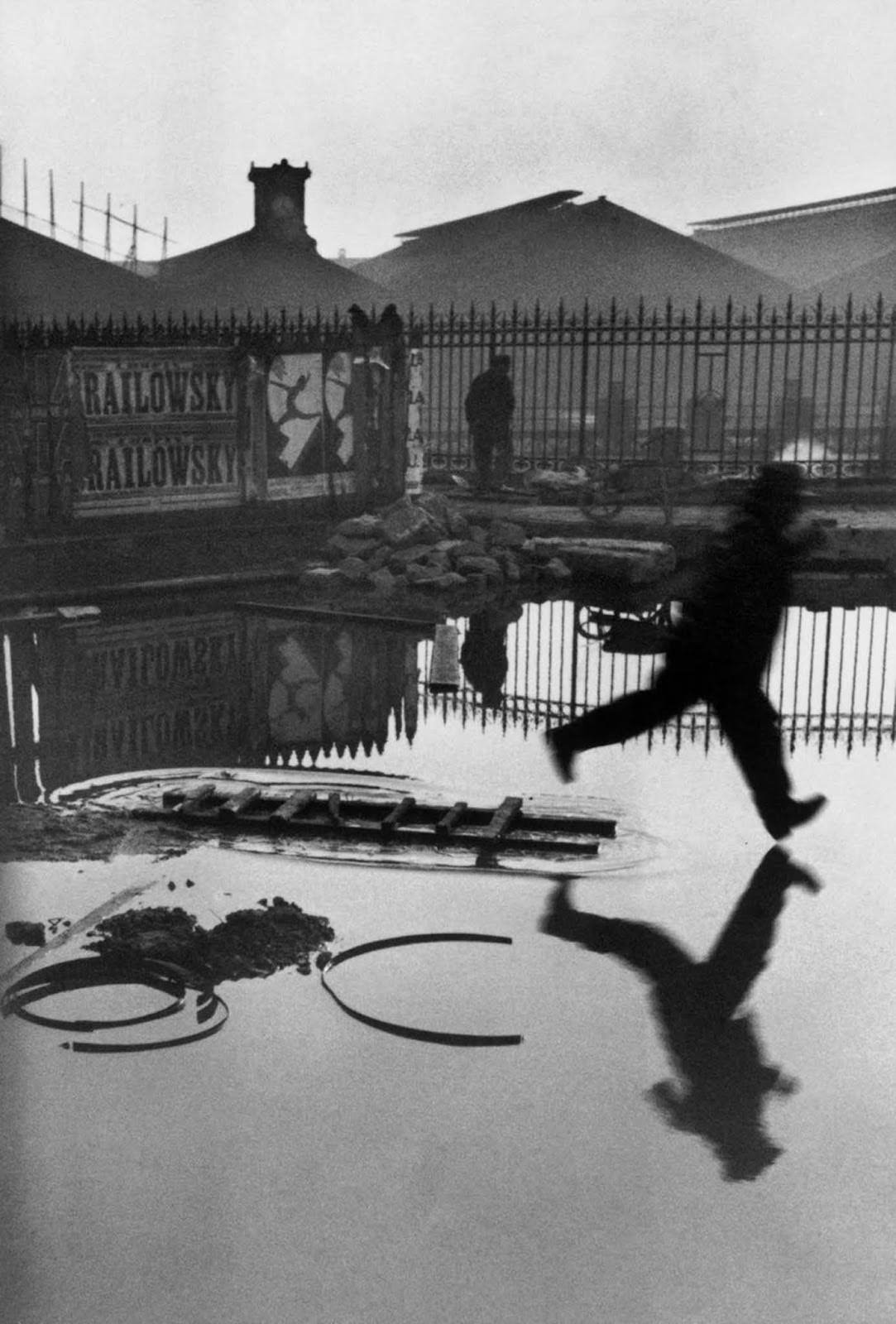
In 1932, Henri Cartier-Bresson took what would become one of the most famous photographs in history. Shot through a fence behind Paris’ Saint-Lazare train station, the image captures a man leaping across water, with a poster of dancers on the wall behind him and ripples in the puddle around the ladder mimicking the nearby curved metal pieces. Taken with a nimble 35-millimeter camera and no flash, the image exemplifies Cartier-Bresson’s “Decisive Moment,” the ability to immortalize a fleeting scene on film. This fast, mobile, detail-obsessed style would become a hallmark of modern photography.
#83 Couple in Raccoon Coats, 1932

James VanDerZee's photography studio in Harlem was the go-to spot for those wanting to capture their best selves. He captured images of African Americans that defied the stereotypical depictions that were prevalent in popular culture. VanDerZee's meticulously staged portraits celebrated his subjects' aspirations and projected the images that they wanted to convey.
One such portrait was that of a handsome couple standing next to a Cadillac roadster, sporting their fur raccoon coats. This portrait challenged popular perceptions about race, class, and success, and became an aspirational model for generations of African Americans yearning for a full piece of the American Dream.
#84 Androgyny (6 Men + 6 Women), 1982
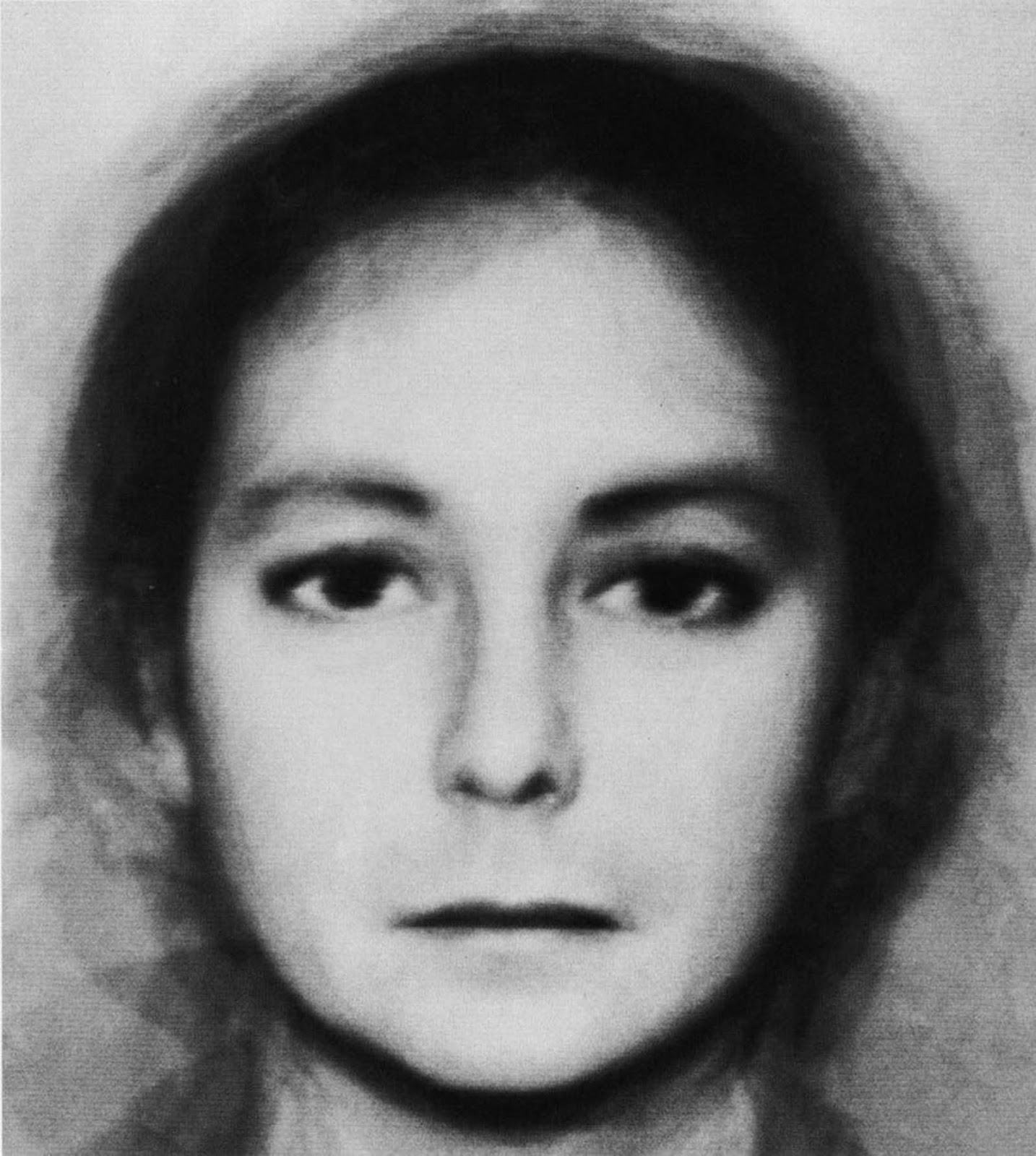
In 1982, Nancy Burson collaborated with scientists at MIT to create Androgyny, a composite image of six men and six women. This groundbreaking work of digital photography allowed for the projection of what someone might look like, rather than just capturing a moment in the past. The technology Burson developed for this project also enabled her to digitally age faces, a breakthrough that has been used by the FBI to locate missing persons. The impact of Burson’s work on the fields of art and science is immeasurable, and it represents a pivotal moment in the history of photography.
#85 Untitled (Cowboy), 1989
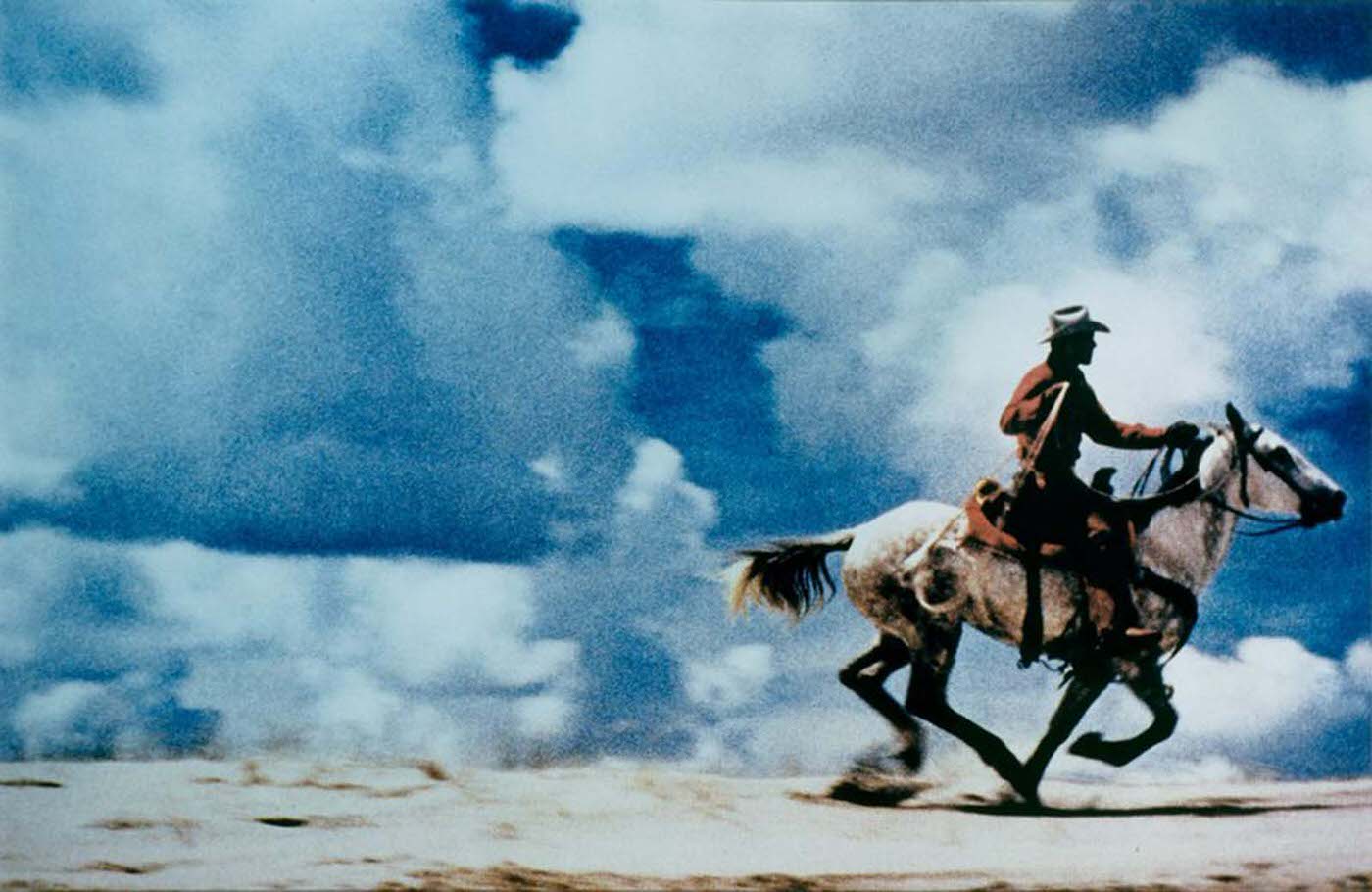
Richard Prince’s Untitled (Cowboy) is a photograph of a photograph, created through a process Prince called rephotography. He took pictures of the iconic Marlboro Man ads, cropping out the text and leaving only the cowboy and the surrounding landscape. The photograph challenged the concept of ownership in photography, as Prince did not take the original picture, and led to the creation of a new art form - photography of photography. In 2005, the photograph sold for $1.2 million at auction, then the highest publicly recorded price for the sale of a contemporary photograph. Prince was later sued for copyright infringement, but the courts ruled mostly in his favor. The work foreshadowed the era of digital sharing and upended our understanding of a photo's authenticity and ownership.
#86 Bricklayer, 1928

August Sander's photograph "Bricklayer" depicts a laborer in Cologne, Germany, embodying the dignity of the working class. The classical framing of the photograph, with the lines of the bricks echoing the lines of the bricklayer's vest, reinforces the proud bearing of the subject. Sander's aim in presenting portraits of people from all layers of society with the same stark directness was to show that there is much to learn from everyone. "Bricklayer" was included in Sander's monumental body of work, "People of the 20th Century," which celebrated the importance of the individual and elevated portraiture of ordinary people to art.
#87 The Hague, 1930

German photojournalist Erich Salomon's photograph "The Hague" captures a candid moment of exhausted Foreign Ministers after a long day of negotiations over German World War I reparations. Taken with a small Leica camera built to shoot in low light, Salomon's photograph was the first to allow the public a glimpse into the smoke-filled back rooms where portly statesmen weighed the fate of nations with cigars and brandy. The photograph caused a sensation when it was published in the London Graphic, creating a new genre of backstage political photojournalism. Despite his groundbreaking work, Salomon died in Auschwitz 12 years later.
#88 Fort Peck Dam, 1936

LIFE magazine's debut issue in November 1936 featured Margaret Bourke-White's photograph of the construction of Montana's Fort Peck Dam on its cover, along with a photo essay inside. Bourke-White, a Fortune magazine photographer hired by LIFE's publisher Henry Luce, used pictures to give a human feel to an article on the world's largest earth-filled dam. She focused not only on the technical challenges of the New Deal project but also on the Wild West vibe in the surrounding town, "stuffed to the seams with construction men, engineers, welders, quack doctors, barmaids, fancy ladies." Bourke-White's cover became the defining image of the magazine and helped establish a style of photojournalism that would influence other great LIFE photographers who followed her.
#89 Untitled Film Still 21, 1978
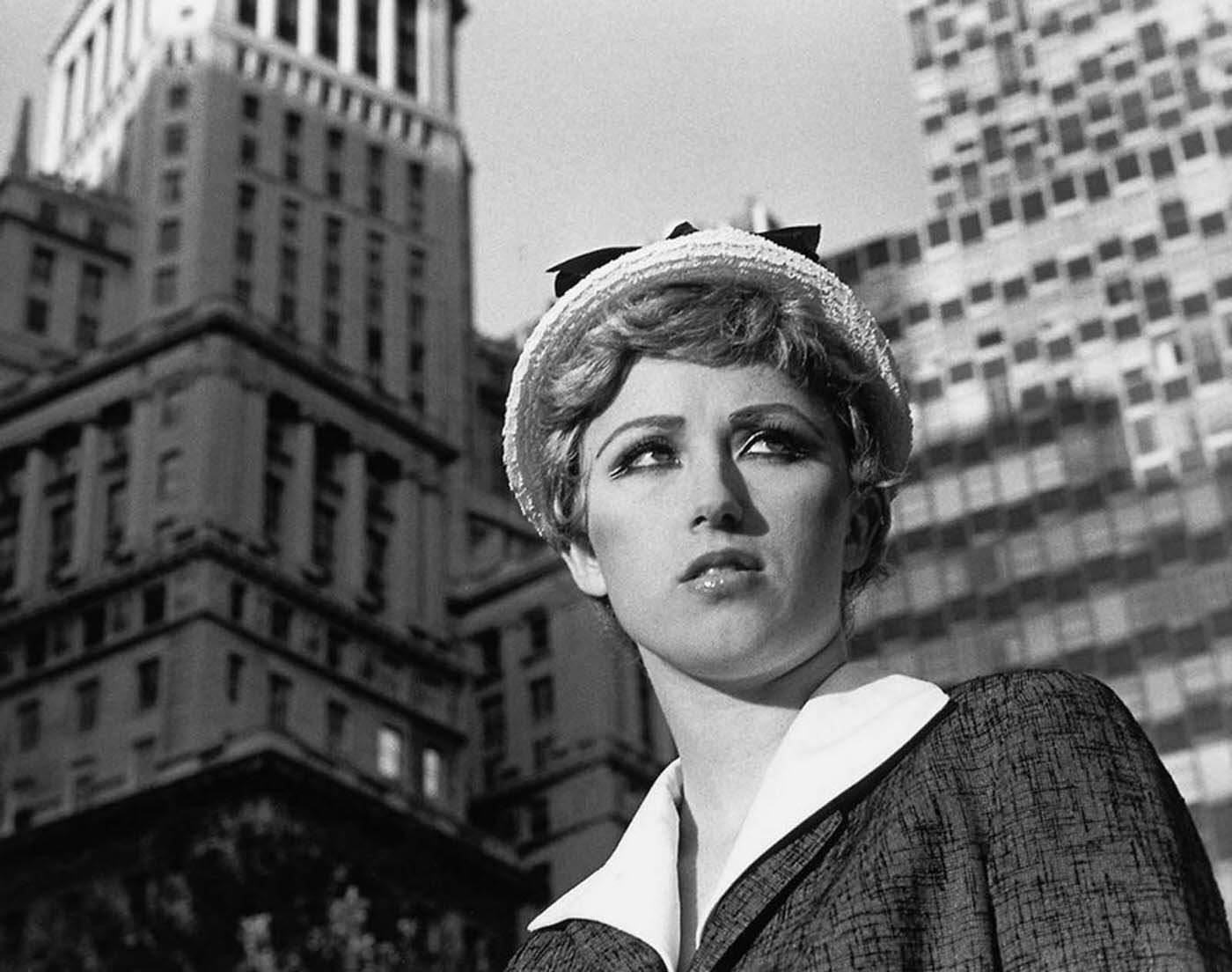
Cindy Sherman's "Untitled Film Still 21" is part of her renowned series of self-portraits, which introduced photography as postmodern performance art in the late 1970s. In this image, known as "City Girl," Sherman places the viewer in the role of an unwitting voyeur, evoking a frame from a B movie or television show opening scene. Rather than capturing real life, Sherman uses photography to deceive and captivate, manipulating viewers and recasting her own identity. Her images have become some of the most valuable photographs ever produced, carving out a new place for photography in fine art and demonstrating its capacity to allow people to be something they're not.
#90 Brian Ridley and Lyle Heeter, 1979
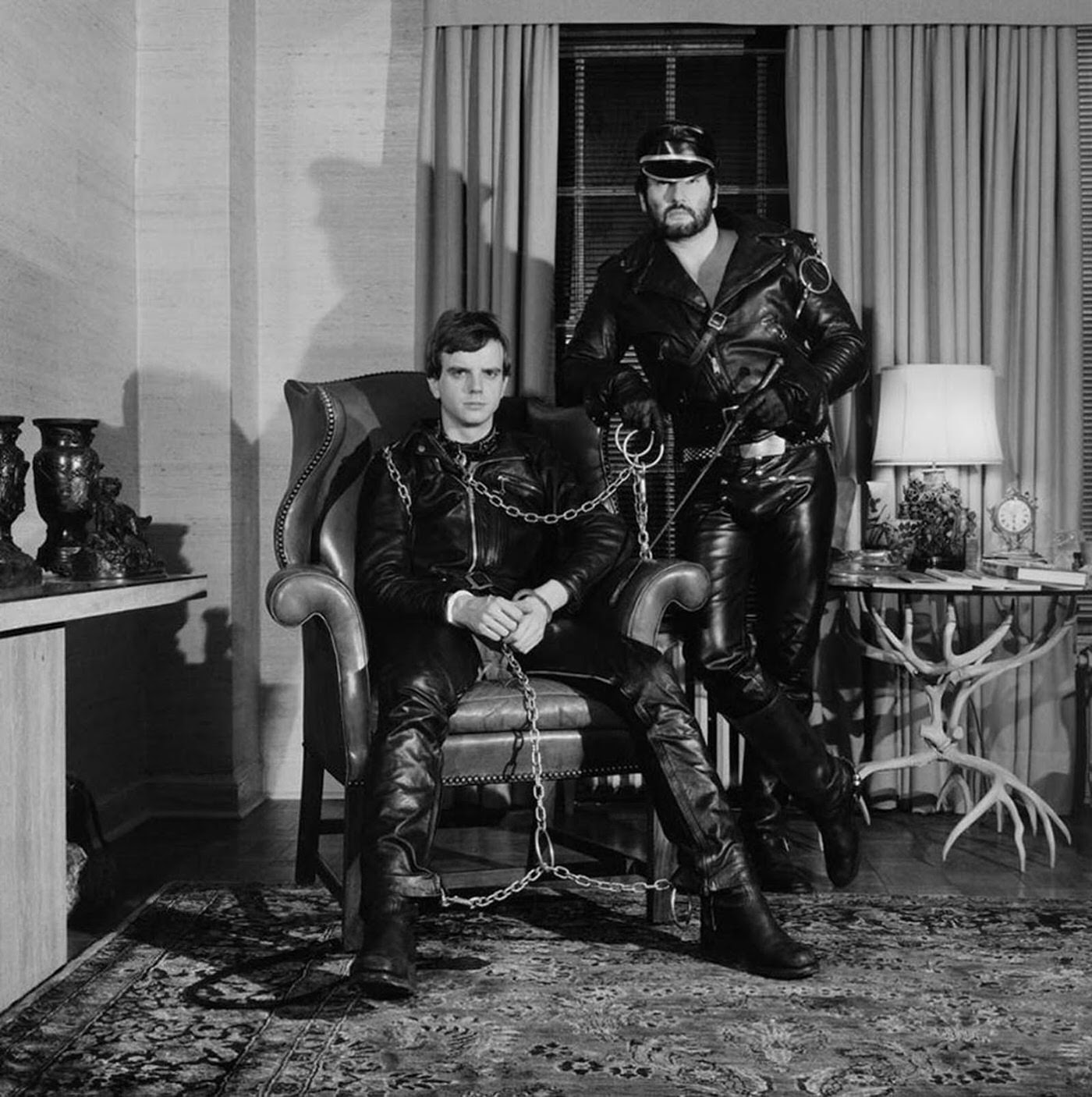
In 1979, when homosexuality was largely marginalized in mainstream American culture, Robert Mapplethorpe's photograph "Brian Ridley and Lyle Heeter" portrayed two men in full sadomasochistic regalia in an otherwise unremarkable living room. The photograph, part of Mapplethorpe's 10-year documentation of the underground gay S&M scene, challenged societal norms and provided a glimpse into a world shielded from public view. The highly stylized portrait of the men, one bound by chains and the other holding a riding crop, added a layer of normality to a relationship that was far outside the bounds of what most Americans considered acceptable at the time. The picture and the series it was part of opened doors for other photographers and artists to frankly examine gay life and sexuality. Despite controversy surrounding Mapplethorpe's work, it continued to provoke and inspire, cementing his legacy as a bold pioneer whose work deserved public display.
#91 Demi Moore, 1991

Vanity Fair's cover featuring Hollywood star Demi Moore in the nude while seven months pregnant with her second child was unprecedented for a mainstream media outlet in 1991. Portraitist Annie Leibovitz's image celebrated pregnancy as much as it titillated, showing how maternity could be empowering and sexy. The photo was deemed a brave declaration by the magazine's editor, Tina Brown, and the first mass-media picture to sexualize pregnancy. However, it was considered too shocking for some, and some grocery chains refused to stock the issue or covered it up like pornography. Despite controversy, the provocative magazine cover changed the culture surrounding pregnancy and birth, making them less private and more publicized in the media.
#92 Cathedral Rock, Yosemite, 1861

Carleton Watkins' photograph "Cathedral Rock, Yosemite" was one of 130 negatives that offered the first printed images of Yosemite's towering peaks, glacial geology, and vast expanse. Watkins packed his mammoth plate camera, tripods, and a makeshift tent darkroom on mules and ventured into the remote California valley decades before Ansel Adams. The images, including "Cathedral Rock," floored the nation's power brokers, and John Conness, a U.S. Senator from California who owned a set of the prints, became an evangelist for Watkins' work. President Abraham Lincoln signed the Yosemite Grant Act into law on June 30, 1864, laying the foundation for the National Park System that now protects some 84 million acres of land.
#93 Allende’s Last Stand, 1973

Luis Orlando Lagos, the official photographer of Salvador Allende, captured one of the Chilean president's final moments during his last stand against Augusto Pinochet's 1973 coup. Armed with an AK-47 and protected only by loyal guards at his side, Allende broadcast his final address on the radio as Santiago's presidential palace was bombarded. Lagos' photograph of Allende appeared anonymously and won the 1973 World Press Photo of the Year award, immortalizing Allende as a hero who chose death over dishonor. For decades, many believed Allende was killed by advancing troops, but it was later revealed that he committed suicide. Pinochet's rule resulted in the torture, killing, or disappearance of 40,000 Chileans, and Lagos fled fearing for his life. His identity was only revealed after his death in 2007.
#94 Molotov Man, 1979
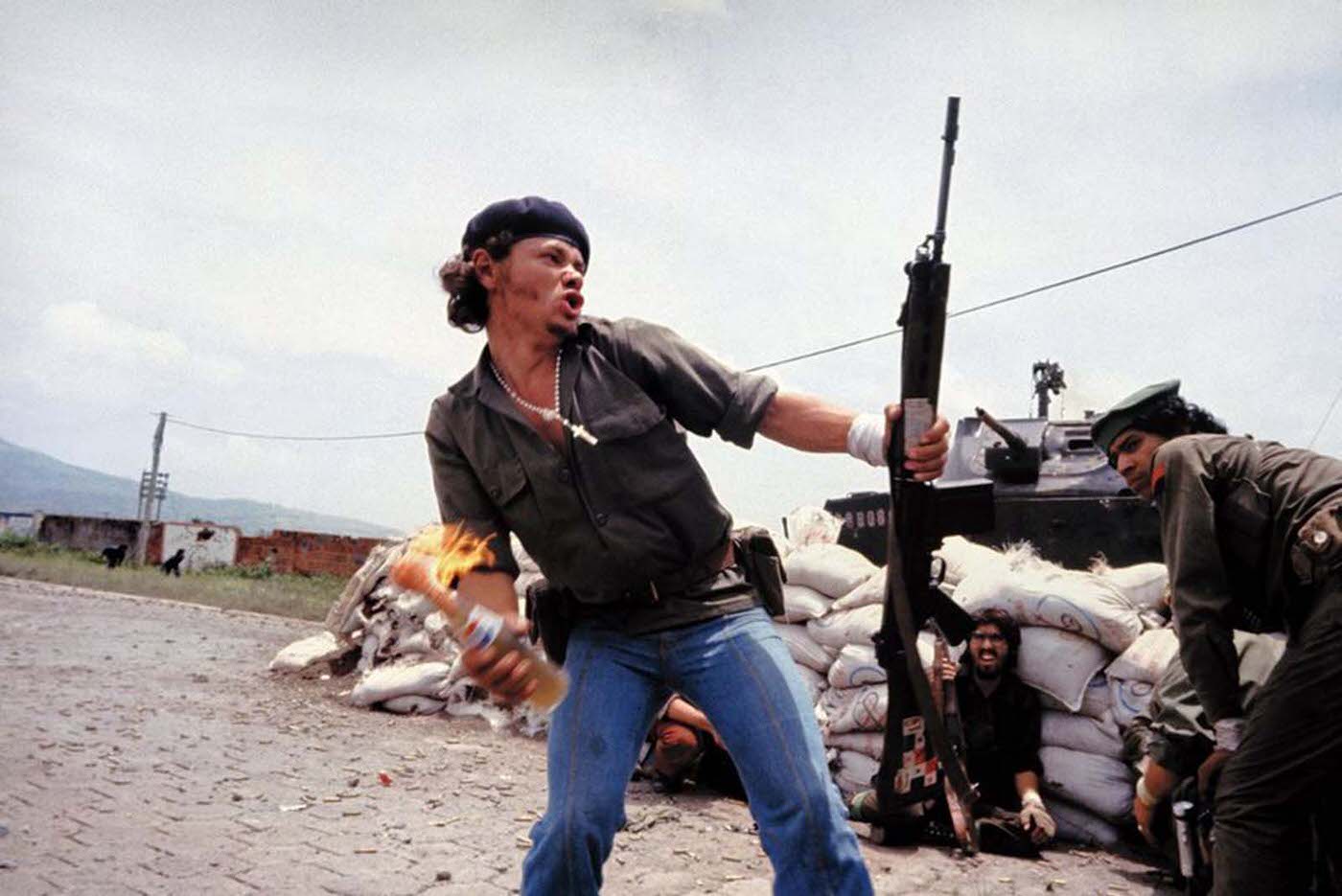
Susan Meiselas' photograph of Pablo de Jesus "Bareta" Araúz throwing a Molotov cocktail at one of the last national guard fortresses became the defining symbol of the socialist Sandinista revolution that overthrew the Somoza dictatorship in Nicaragua. Meiselas, a young photographer with an anthropologist's eye, roamed the country for six weeks, documenting its poverty, beauty, and inequality. Her work was sympathetic to the Sandinista cause, and the image of Molotov Man became ubiquitous throughout Nicaragua after the Sandinistas took power, appearing on matchbooks, T-shirts, billboards, and brochures. The image later became a flashpoint in the debate over artistic appropriation when Joy Garnett used it as the basis of her 2003 painting "Molotov."
#95 North Korea, 2013

In 2013, Associated Press photographer David Guttenfelder used his iPhone to post one of the first images to Instagram from inside North Korea, a country that had been largely off-limits to foreign journalists for nearly 60 years. Guttenfelder chronicled the official events and stage-managed pageants in Pyongyang but also captured the scenes of daily life just beyond the guided tours. When North Korea made a 3G connection available to foreigners, he used the emerging technology of the sharing age to open a window into one of the world's most closed societies. Guttenfelder's use of Instagram inspired other foreigners to do the same, creating a portrait of the monotony of everyday life not visible in mainstream coverage of the totalitarian state and bringing the outside world its clearest picture yet of North Korea.
#96 The Critic, 1943

The photo captured by Arthur Fellig, also known as Weegee, in 1943, depicts a stark contrast between social and economic inequalities that existed post-Great Depression. Weegee staged the photograph by sending his assistant, Louie Liotta, to a Bowery dive in search of a drunk woman. He then took her to the Metropolitan Opera House, where he set her up near the entrance, waiting for the arrival of wealthy socialites, Mrs. George Washington Kavanaugh and Lady Decies. When they arrived, Weegee gave the signal, and Liotta sprang the drunk woman, taking her photo with the society women. The photo, titled "The Fashionable People," appeared in Life magazine, highlighting the stark juxtaposition of fabulous wealth and dire poverty.
#97 Chairman Mao Swims In The Yangtze, 1966

In July 1966, Mao Zedong, the 72-year-old Chairman of the Chinese Communist Party, took a swim in the Yangtze River to showcase his robust health and secure his grip on power. The widely circulated image of his swim was a propaganda coup for Mao and did just what he hoped - it solidified his position as a leader and bolstered his legacy. Mao then launched the Great Proletarian Cultural Revolution, which lasted a decade and resulted in the deaths of over a million people. The photo remains an iconic image of Mao's reign and the cultural revolution that ensued.
#98 Immersions (Piss Christ), 1987

Andres Serrano's photograph of a crucifix submerged in his own urine, titled "Piss Christ," was created in 1987 and was not initially intended to offend. However, the photo caused controversy in 1989 when it was exhibited in Virginia, drawing the attention of a pastor and Congress. Two senators, Al D'Amato and Jesse Helms, were outraged that Serrano had received funding from the National Endowment for the Arts (NEA), and pushed for a law requiring the NEA to consider "general standards of decency" when awarding grants. The debate over the government's right to censor art turned Piss Christ into a key front in the culture wars of the 1980s and 1990s, alongside the work of other NEA recipients like Robert Mapplethorpe. The controversy over Piss Christ contributed to its fame, inspiring other artists to push limits even further. However, the decency-standards law passed as a result of the controversy was upheld by the Supreme Court in 1998.
#99 Oscars Selfie, 2014

In 2014, during the Oscars, host Ellen DeGeneres corralled some of the world's biggest stars, including Bradley Cooper, Meryl Streep, Brad Pitt, Jennifer Lawrence, and Kevin Spacey, to take a selfie with a Samsung phone. DeGeneres immediately posted the picture on Twitter, and it was retweeted over 3 million times, becoming the most retweeted photo in history. Samsung received an enviable advertising coup, with their phone being prominently displayed in the televised "selfie moment." The image became a transformational one, demonstrating the incredible speed and ease with which images can spread around the world in the celebrity-saturated Internet age


